#east la graffiti
Text

Graffiti on trucks, May 2022
#los angeles#california#photography#google pixel#tybg#fyp#photos#my photos#white box truck#box truck#box truck graffiti#pictures of la#boyle heights#east la#east la graffiti
3 notes
·
View notes
Text





full moon on an overlook with some outer-space friends
#aliens#outerspace#outer space#graffiti#LA#full moon#moon#nature photography#graffittiart#east of eden
0 notes
Text
A Chabad synagogue in Pomona, New York, burned to the ground on April 17th, along with its three Torah scrolls.
Torah scrolls are hand-written, hand-made, and kept in elaborately decorated cases or wrappings.
Many of them have long histories; my synagogue has two, I think, that were smuggled out of villages being destroyed in pogroms or in Nazi attacks. One of them is the only remaining piece of that village on earth.
Sometimes, the Torah scroll doesn't even belong to the synagogue, but is on loan from a place like the Memorial Scrolls Trust:
There's an entire Jewish holiday just for taking them out and dancing with them: Simchat Torah, "The Joy of Torah."
In fact, that was the holiday on which Hamas's invasion took place.
instagram
So it's a particular tragedy when a Torah is destroyed.
Chabad itself has a page about what goes into making just one Torah scroll:
"An authentic Torah scroll is a mind-boggling masterpiece of labor and skill. Comprising between 62 and 84 sheets of parchment -- cured, tanned, scraped and prepared according to exacting Torah law specifications -- and containing exactly 304,805 letters, the resulting handwritten scroll takes many months to complete.
"An expert pious scribe carefully inks each letter with a feather quill, under the intricate calligraphic guidelines of Ktav Ashurit (Ashurite Script). The sheets of parchment are then sewn together with sinews to form one long scroll. While most Torah scrolls stand around two feet in height and weigh 20-25 pounds, some are huge and quite heavy, while others are doll-sized and lightweight."
I learned all of this on Tumblr.
Once upon time, in people's "punch Nazis" days, I would've been able to find some mention on Tumblr of this synagogue burning.
There is none, so I'm posting about it.
And I'm going to quote Daniel Weiner, Rabbi of Temple de Hirsch Sinai in Bellevue, Washington, when his own synagogue was vandalized last November:
"It’s horrific and heartbreaking.... [Taking out your feelings about] what's going on in the Middle East by defacing a sacred space of a synagogue -- that’s the very definition of antisemitism."
I'm also posting about the Kehillat Shaarei Torah Synagogue in Toronto, whose windows were broken on Friday, April 19th, by someone who also tried to break the front door down.
And the April 15 graffiti outside a Bangor, Maine synagogue that said, "Nazi Israel 30K murdered," next to a crossed-out Star of David. The same synagogue faced pro-Hamas flyers plastered around it in November.
I was going to include all the synagogues vandalized over the past six months. But there are way too many. Several every week. Lots are swastikas.
I'll go back to just doing attacks on and near synagogues.
Someone has to talk about the 1-year-old who was stabbed outside Temple Beth Zion-Beth Israel (BZBI) synagogue, in Philadelphia, on April 13th.
The foiled terrorist attack on a Moscow synagogue on April 11th.
The man who, on April 9th, screamed at the rabbi at Moldova's Great Synagogue, "What are you doing here? How come no one has finished you off for everything you are doing to the Palestinians?" Just one week after people had vandalized a Holocaust memorial in nearby Soroka, and sprayed "Free Palestine" on it.
The Oldenburg, Germany synagogue that was firebombed on April 5th.
The Florida Las Olas Chabad Jewish Center, which on March 16 burned, but not to the ground. The Torah scrolls were safe, and no one was hurt, but the back of the building was severely damaged.
The planned-but-thwarted-on-March-7th ISIS massacre in a Moscow synagogue.
The stabbing of an Orthodox Jew in Switzerland on March 5th. (He was badly injured, but expected to survive.)
A man leaving a synagogue in Paris was beaten on March 3rd.
People set the courtyard of a synagogue in Sfax, Tunisia on fire on February 27th. Firefighters managed to put the fire out before it consumed the inside of the building.
The synagogue is no longer used; there are no Jews left in its area, and fewer than 1,000 Jews left in Tunisia overall.
(Thousands of Tunisian Jews were sent to work camps during the Holocaust. Antisemitism across the Middle East continued to increase rapidly for decades. By the 1970s, 90% of Tunisian Jews had fled to France or Israel.)
On February 18, an Orthodox Jew leaving Synagogue of Inverrary-Chabad in Lauderhill, Florida, was beaten by an attacker yelling racial slurs.
Someone deliberately chose International Holocaust Remembrance Day, January 27, to smash all the windows in the front of Sgoolai Israel Synagogue in downtown Fredericton, New Brunswick.
On December 29, Turkey arrested 32 people linked to ISIS who were planning attacks on synagogues and churches.
On December 17, a man drove a U-Haul truck up onto the sidewalk between a barrier and the front door of the Kesher Israel Congregation in Washington D.C., got out, and started yelling "Gas the Jews." He also sprayed a foul-smelling substance on two people leaving the synagogue.
December 17 also saw 400 synagogues across the United States receive bomb threats.
On December 11, a man attacked an elderly couple on their way into a synagogue in Los Angeles, screaming, "Give me your earrings, Jew!!" and beating one of them bloody with a belt. (Happily, he chased the guy down the street, and caught him when his pants fell down.)
On December 10, a 16-year-old was arrested in Vienna for planning an attack on a synagogue.
On December 8, on the first night of Hanukkah, 15 synagogues in New York State received bomb threats. And someone screamed, "Free Palestine," and fired shots outside of Temple Israel in Albany, NY. Which has a preschool that was in session.
Meanwhile, the five Jews left in Egypt were canceling public Hanukkah candle-lighting at their synagogue out of fear of reprisals. Particularly after two Israelis in Alexandria had been gunned down by terrorists on October 8. (While Israel was still fighting Hamas in Israel.)
On November 15, a terrorist group set the only synagogue in Armenia on fire.
Armenian Secret Army for the Liberation of Armenia (ASALA) has a history of working with the Popular Front for the Liberation of Palestine (PFLP).
(PFLP is part of Hamas's network of groups. Samidoun is their nonprofit arm - which is why Germany banned Samidoun last year, although it's still active in many other countries.
PFLP is also actively supported by the Palestinian Youth Movement (PYM), a diaspora nonprofit group, and Within Our Lifetime (WOL), an SJP spinoff in NYC.)
On November 11, halfway through Shabbat services, police asked Central Shul in Melbourne, Australia to evacuate "as a precaution" due to a "pro-Palestinian" protest that had chosen the neighboring park as its gathering place. Australia has seen some very outspoken antisemitism at protests, including the march shortly after October 7 that chanted "Gas the Jews."
Also on November 11, protesters targeted a synagogue along a march route. They sat in their cars, spraying green smoke and shouting at people leaving the synagogue. The march itself featured a record number of horrifying signs and chants.
On November 7th, Congregation Beth Tikvah in Montreal was firebombed, and the back door of the Jewish organization across the street (Federation CJA) was set on fire.
On November 4, protesters chanted "Bomb Israel," and burned an Israeli flag outside the only synagogue in Malmo, Sweden.
During October, there were 501 antisemitic acts under investigation in France in just three weeks, including groups gathering in front of synagogues shouting threats, and graffiti such as the words “killing Jews is a duty” sprayed outside a stadium.
On October 18, people firebombed a synagogue in Berlin after homes all over the neighborhood were graffitied with stars of David.
And also on October 18, hundreds of "pro-Palestine" rioters attacked the Or Zaruah Synagogue, in the Spanish enclave of Melilla in North Africa, while worshippers were inside.
Based on the video, they seem to have blocked the synagogue entrance completely, while screaming "Murderous Israel" and waving Palestinian flags. (Melilla is an autonomous zone belonging to Spain. It borders Morocco.)
On October 17, during pro-Palestinian protests, hundreds of rioters set fire to Al Hammah synagogue, an abandoned house of prayer in central Tunisia. They hammered down the building’s walls and raised a Palestinian flag on the building. Police did not intervene.
The Facebook page "Tunigate", which has around 88 thousand followers, published a video of the assault. So did "Radio Bousalem”, with 83 thousand users. The vast majority of comments on these videos welcome these acts. The building was severely damaged and almost completely razed to the ground.
On October 15, bomb threats were sent to many East Coast synagogues. Attleboro synagogue Congregation Agudas-Achim received one of the emails, which read, "The bombs will blow up in a few hours. A lot of people will die. You all deserve to die."
On October 8 -- again, while Hamas was still in Israel -- Madrid’s main synagogue was defaced with graffiti that read “Free Palestine” next to a crossed-out Star of David.
And on October 7, an assailant in Rockland, NY fired a BB gun at two women entering a synagogue. Later in the month, a banner at the Stephen Wise Free Synagogue in the area was vandalized with the words, “Fuckin kikes."
#if you have used “Free Palestine” as if it's a sort of verbal assault you can shout in comments or scribble over flyers#if you are unwilling to hear what the Jewish term Zionism means to the people who use it#if you cannot name one Palestinian human rights activist#and most of all if you don't know how Hamas abuses Palestinians and you still think it's The Resistance#then you. are. the. problem.#if you don't know people in gaza have been protesting Hamas and blaming it for deliberately instigating a war they don't want#if you don't know how often they've spoken out about Hamas stealing aid and selling it to them#and especially if you don't want to believe me much less find Palestinians in Gaza to listen to#also if you didn't know about any of the stuff in this post BUT you have taken it upon yourself to tell Jews that “it's not antisemitism”#like seriously everyone deal with your learned distrust of Jews challenge#wall of words#fire tw#guns tw#violence tw#Instagram
721 notes
·
View notes
Text
✨Teaser: In Technicolor✨


So some of you may know this, but my next fic that was set to release was originally called “Ballad of a Teenage Dream” and was a Wednesday x Skam crossover that showcased all the highs and lows of high school and the growing pains that come with the transition from teenager to young adult.
Well that story has been reworked, overhauled, and given new life.
I present to you my high school dramady, In Technicolor.
Set in Los Angeles, California, the story follows two groups of friends as their worlds collide. A modern spin on the social dynamics of Romeo and Juliet where two factions are warring but cannot remember why or why their bitter rivalry is so important to their identity, In Technicolor highlights the feuding of the wealthy and the everyday citizens to show the consequences that come from stripping culture and history from the city streets in the name of gentrification. It explores the complex relationships of families on either side of the fence to reveal that wealth does not always bring happiness. And finally, at the center of it all, the complicated friendships and relationships of the members of these two groups as they meld into one.
For our East LA champions, we follow the Addams siblings and their mismatched group of skateboarders, graffiti artists, musicians, and street racers.
For our Palisades elite, we focus on the Blossoms and Galpin’s—two families from extreme wealth that are not entirely honest about what they show the world.
.
.
.
Important Story Information: If the visuals were not enough to give it away, this story will be a crossover with a different fandom. Entering the mix is the ensemble from Riverdale. I do want to caution readers now, there will be crossover pairings, character retcon on both sides, ageing up, ageing down, and changes to character personalities.
One such example is that Wednesday isn’t allergic to color and isn’t entirely unapproachable. She smiles and laughs but only when around those she trusts like her family and friends. Pugsley has been aged up and is Wednesday’s twin brother. My face claim for this version of Pugsley is Xolo Mariduẽna and I have made Pugsley (who also will be going by “Lee”) more confident and hotheaded with some snark and sass. Second to that, my face claim for Pubert “Bertie” Addams is Malachi Barton and Pubert/Bertie will be one year younger than his siblings—the twins Wednesday and Pugsley age 17 and in their senior year and Bertie age 16 entering his junior year.
On the Riverdale side of the crossover, I have made certain changes that I don’t want to reveal just yet for Archie’s character. That surprise will come soon enough because next I will be posting moodboards for specific couples that will be at the center of this story. But one change I will discuss now to get it out there to avoid hate comments and harassment is the issue of is Cheryl bi or is she a lesbian. In my story, she’s bi and will be paired with a male lead. I understand that the actress for her character went back and forth on Cheryl’s orientation but, to me, Cheryl reads like a chaotic bisexual that goes back and forth on her identity because being bi is confusing enough. And as someone who is bi, I would like to see more representation and fiction for people like myself because fandoms are so quick to erase bisexuality and pansexuality and criticize us when we speak up about it. So in this story, Cheryl is bi and she has broken up with her most recent girlfriend before meeting her next partner who is a man. And it’s fine.
If this upsets you, just swipe off of this post. Don’t leave mean comments or take digs at me because I’m not for any of this fandom infighting nonsense. It’s fiction and these characters can be whatever you want them to be in your stories.
However, if you don’t mind Cheryl liking both men and women, you don’t have an opinion either way, or your curious to see how this’ll pan out, stay tuned. I’d love to share this story with you. All are welcome so long as things stay civil and breezy.
So with that, I look forward to updating with the couple’s board and then the first chapter titlecard along with the chapter itself. Until then, stay lovely and stay groovy.💜
#wednesday netflix#riverdale#tyler galpin#wednesday addams#pugsley addams#pubert addams#wyler#weyler#kent and divina#bianca barclay#bughead#cheryl blossom#jason blossom#betty cooper#jughead jones#polly cooper#archie andrews#reggie mantle#veronica lodge#josie mccoy#enid sinclair#ajax petropolus#enid x ajax#betty x jughead#sweet pea riverdale#joaquin desantos#kevin keller#moose mason#xavier thorpe#josie x sweet pea
36 notes
·
View notes
Text
By BEATRICE SAYERS
An event in London last week to mark the exodus and expulsion of Jews from Arab countries became an opportunity to counter the current far-left narrative that paints Israel as a country of white settlers.
Organiser Lyn Julius, who runs Harif, the association of Jews from the Middle East and North Africa, told the audience at JW3 that 50 percent of Jews in Israel have roots in Arab and Muslim countries. They had not left those countries willingly, she added, and many left as a result of massacres.
“Families butchered like sheep, bodies buried in the debris of homes in which pogromists had locked the families before setting them on fire. Jewish girls raped, their breasts cut off. No, I am not describing 7 October 2023,” Julius said. “We have been here before. It’s an anti-Jewish atrocity which occurred in Constantine, Algeria, in 1934. But I could have cited any number of similarly barbaric atrocities: in Fez, Morocco, in 1912, in Tripoli, Libya, in 1945, in Iraq in 1941 the Farhud, which claimed the lives of at least 179 Jews.”
She pointed out that Israel was “the solution to pre-existing antisemitism” that had led to pogroms across the region. “In a generation and a half almost all the ancient, pre-Islamic Jewish communities of the Middle East and North Africa have been ethnically cleansed. Hamas simply wants to finish the job. From almost a million Jews in 1948, only about 4,000 remain, and that number dwindles year by year.”
Julius herself is the child of parents who came to Britain from the Iraqi capital Baghdad in 1950. A film shown at the event presented testimony from Jews who had been forced out of their native counties in the Middle East and North Africa.
Jocelyne Shrago is one of the four people interviewed in the film, commissioned from Daisy Abboudi, deputy director of the oral history archive Sephardi Voices UK.
Shrago, who was born in Algeria, told how during the Constantine pogrom her parents and sister went over the wall to the Arab family who lived next door, who saved them. She recalls the bombing campaign during the Algerian war of independence in the 1950s, when she covered her baby niece with her body to protect her. “People had to leave in ‘62 because on the walls there was graffiti that said ‘La valise ou le cercueil’, ‘the suitcase or the coffin’.” Some went to Israel. Her family on both sides went to France, where she lived until 1968, when she moved to the UK.
Other speakers at the event last Thursday, the ninth that Harif has organised, included Baroness (Ruth) Deech, Joseph Dweck, senior rabbi of the S&P Sephardi Community, Marie van der Zyl, president of the Board of Deputies, Claudia Mendoza, chief executive of the Jewish Leadership Council, and the Israeli ambassador Tzipi Hotovely. The ambassador said Mizrachi Jews were not just 50 percent of Israel’s population but had shaped her history. “Israel today is a very healthy mix between west and east.”
Mendoza spoke movingly about her mother’s family, who are from Aden. They were forced to flee and her grandfather was murdered. “The clarity with which my family speak when they talk about threats to your life because you’re a Jew resonate more than ever today. They have seen it before and they do not have the luxury of denalism.”
But she also had a powerful and uplifting message to the Jewish community, and warned it not catastrophise or retreat into itself.
“The polling that we’ve done at the JLC [Jewish Leadership Council] after the October 7 attack shows that while there may be a small number of extremists in the UK who support Hamas, and they must be called out, the vast majority of British people recognise them for the murderous terrorists that they are and they reject those that wish to target jews here in the UK.
“If we fight as if we are surrounded exclusively by enemies, we risk by that very attitude making enemies we didn’t previously have, and losing friends whose sympathies we fail to notice. We have so many friends, I promise you that.”
33 notes
·
View notes
Text
Zodiac Signs, Cities & Curious Facts! 🌆
Each city was selected by me from "The Rulership Book" by Rex E. Bills, alongside one fact that matches that particular sign's energy! There are more cities and places that align with the vibration of each sign, but these are the ones I picked for this post. All pictures are from Google Images.
Enjoy this random and (hopefully) fun thread!😁
♈Aries: FLORENCE, Italy
Florence has a unique street festival: The "Calcio Storico" is a traditional street football game played annually there. The game involves four teams representing the four historic quarters of the city, and it's known for its rough and intense style of play!
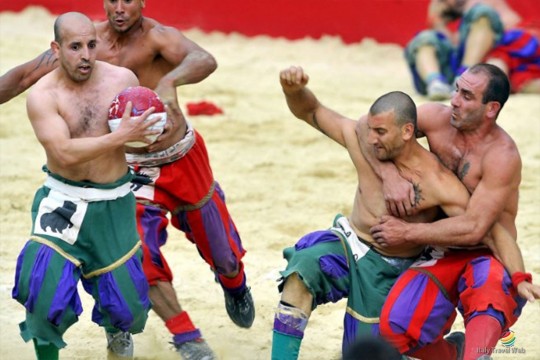
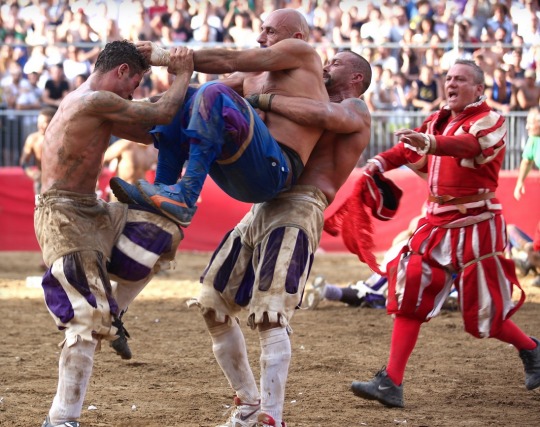
♉Taurus: LEIPZIG, Germany
Leipzig is known as the "City of Music": Leipzig has a rich musical heritage and is considered one of the world's most important cities for classical music. Famous composers such as Johann Sebastian Bach, Richard Wagner, and Felix Mendelssohn Bartholdy have strong connections to Leipzig, and their music is celebrated in the city's numerous concert halls, museums, and festivals.
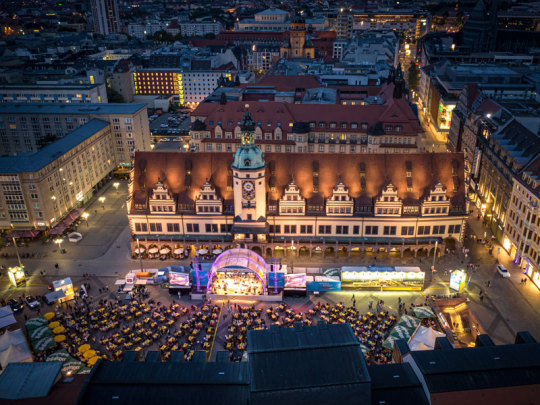
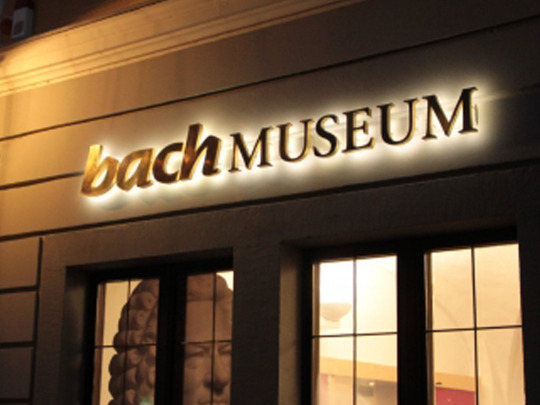
♊Gemini: LONDON, England
London has a "whispering gallery": The Whispering Gallery in St. Paul's Cathedral is a circular gallery that runs around the interior of the dome. Due to its unique acoustics, if you whisper against the wall on one side of the gallery, the sound can be heard on the other side, over 100 feet away.

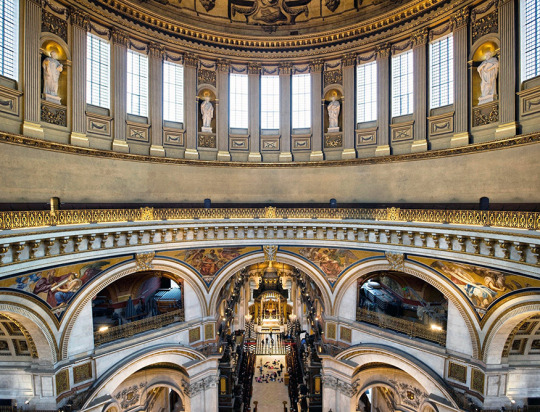
♋Cancer: ISTANBUL, Turkey
Istanbul has a famous street for cats: The "Cat Street" or "Kedi Sokak" in Turkish is a narrow street in the historic district of Sultanahmet that is home to dozens of stray cats. The cats are well-fed and cared for by locals, and the street has become a popular tourist attraction.
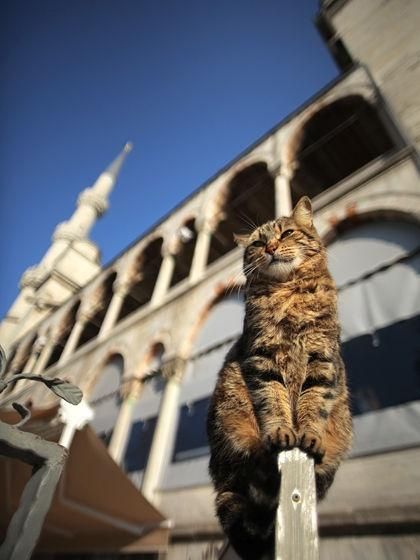

♌Leo: BERLIN, Germany
Berlin is a graffiti artist's paradise: The city has a long history of street art and is home to some of the most famous graffiti murals in the world. The East Side Gallery, a section of the Berlin Wall that has been turned into an open-air gallery, features over 100 paintings by artists from around the world.
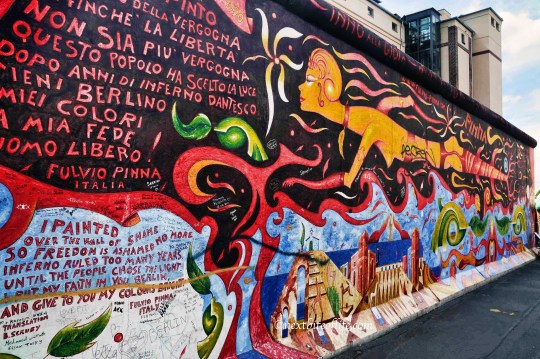
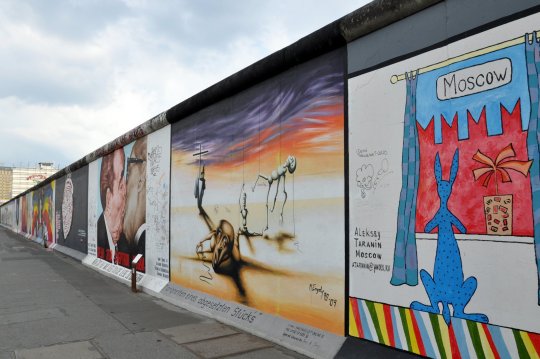
♍Virgo: MOSCOW, Russia
Moscow has a rich literary history: Many famous Russian writers, including Leo Tolstoy, Fyodor Dostoevsky, and Anton Chekhov, lived and worked in Moscow. It also has the largest number of public libraries in the world: "The Russian State Library" , which is the largest library in Europe and the second largest library in the world, after the Library of Congress in the United States.


♎Libra: VIENNA, Austria
Vienna has a rich musical history: Vienna has been a center of musical innovation and creativity for centuries and has been home to many famous composers such as Mozart, Beethoven, and Strauss. Today, the city is renowned for its classical music scene and is home to the world-famous Vienna Philharmonic Orchestra.
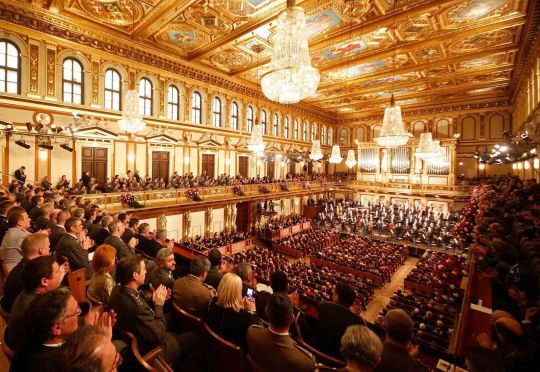

♏Scorpio: TOKYO, Japan
Tokyo has a unique fashion scene: Tokyo's fashion scene is known for its avant-garde and eclectic styles, with Harajuku being the center of youth fashion culture. "Gothic Lolita" is part of Harajuku, and it incorporates darker and more macabre elements into the Lolita fashion aesthetic.

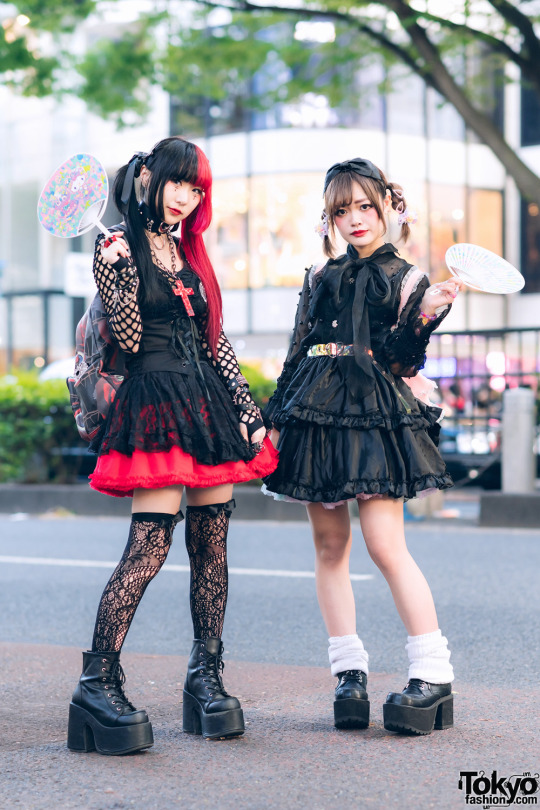
♐Sagittarius: TUSCANY, Italy
Tuscany is home to the oldest university in Europe: The University of Bologna, which is located in Tuscany, is the oldest university in Europe, having been founded in 1088. It is still one of the most prestigious universities in Italy.
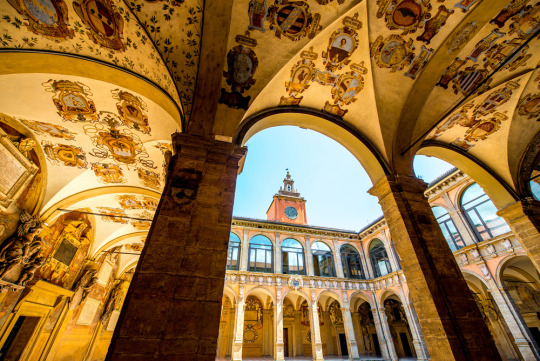
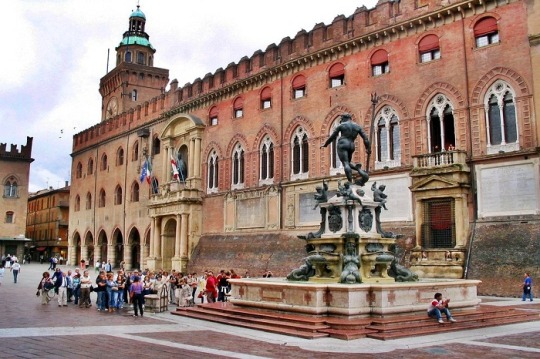
♑Capricorn: BRUSSELS, Belgium
Brussels is home to the "Atomium": The Atomium is a unique architectural structure in Brussels that was built for the 1958 World Exposition. It is designed to represent an iron crystal magnified 165 billion times, and it has become an iconic symbol of the city.
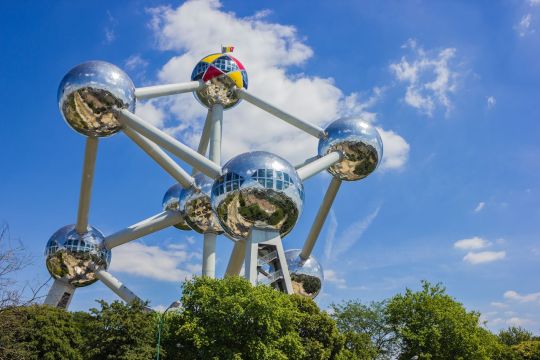

♒Aquarius: LOS ANGELES, California
LA is the birthplace of the Internet: The first successful transmission of a message over the Internet occurred on October 29, 1969, between two computers located at the University of California, Los Angeles (UCLA) and the Stanford Research Institute. This event is considered the birth of the Internet.
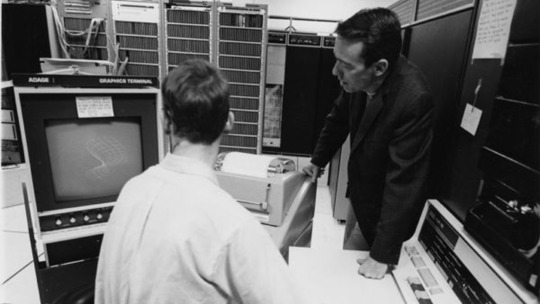
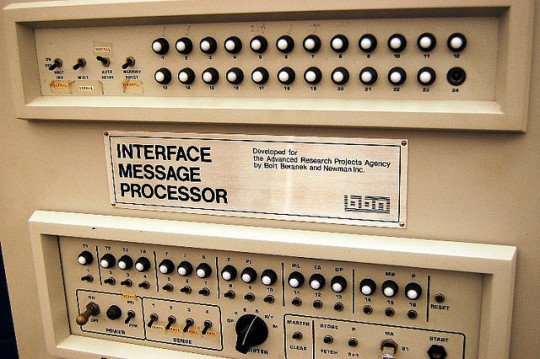
♓Pisces: GALICIA, Spain
Galicia is home to an ancient spiritual destination: The Way of St. James, also known as the Camino de Santiago, is a famous pilgrimage route that leads to the cathedral of Santiago de Compostela in Galicia. Every year, thousands of people from all over the world make the 780 km journey on foot, bicycle, or horseback. Many of them walk the route for spiritual reasons, while others enjoy the physical challenge and the opportunity to meet people from all over the world.
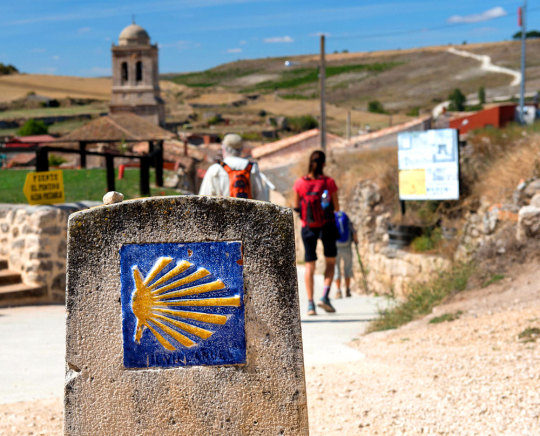

Now, that was a pleasure to put together! How do you feel about the fact/city for your sign? As a Virgo, I'd love to visit the Moscow library, but as a weird/edgy fashion sucker, Tokyo seems like a whole lot of fun! Also, the Aries one made me LOL! Y'all just can't stop fighting, can you? 😂
Which fact/city is your favorite one(s)? Let me know down below! 🖤
- Foxbörn
ᴍᴀꜱᴛᴇʀʟɪꜱᴛ 1
ᴄʜᴀʀᴛ ʀᴇᴀᴅɪɴɢꜱ
ᴡᴀɴᴛ ᴛᴏ ʙᴜʏ ᴍᴇ ᴀ ᴄᴏꜰꜰᴇᴇ?
#astro notes#astrology#astro observations#astrology notes#birth chart#zodiac#astro community#zodiac signs#horoscope#aries#taurus#gemini#cancer#leo#virgo#libra zodiac sign#scorpio#sagittarius#capricorn#aquarius#pisces#travel
135 notes
·
View notes
Note
Kelly!! I’m going to NY for an extended work trip and my mind is SPINNING thinking about walking around the same places birdie and ez are, the nyc magic, feeling the love in the springtime air 🥹 I can’t remember but do you have a post sharing all the locations you mentioned or thought of while writing? Would love to walk in their footsteps 💕
omgomgomgomg — you are living my DREAM 😍 I’ve often daydreamed about going back and taking a sort of “In The Dark” tour
Here is the official In The Dark Guide:
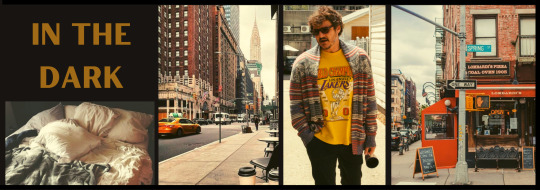
Chapter One:
NYU (Cee and Birdie's college)
The Guggenheim (Birdie's dream museum)
The Bean (the coffeeshop where Birdie and Cee eat lunch together for the first time)
Chelsea (the neighborhood Ezra's brownstone is in)
Chapter Four:
Chelsea Farmer’s Market
Strand Books (bookstore where Ezra corners Birdie)
Chapter Five:
Brighton Beach (neighborhood where Ezra scouts antiques)
Tribeca, Greenwich Village, West Harlem, Midtown (all neighborhoods)
Chapter Six:
Sofreh (Persian restaurant where Ezra celebrates his birthday, and drinks their signature cocktail: a Sekanjabin Martini)
Breads Bakery (French lunch stand in Bryant Park)
Chapter Seven:
The Library (punk bar in East Village)
Chapter Eight:
Central Park, the section along 59th and 6th, The Museum of Modern Art and La Bonne Soup (Ezra and Birdie's date weekend)
Chapter Nine:
The New York Public Library, East Wing (where Cee hides after finding out)
Chapter Ten:
The Museum of Modern Art (specifically the painting, The Dream by Henri Rousseau, which is actually also Pedro's favorite and he used to visit it a lot when he lived in NYC). Inside the museum, there is a section of windows that face a courtyard and that was where Ezra was pacing during his phone call with Birdie.
Chapter Eleven:
Hudson River Park, between 100th-125th St (cherry blossom lined paths where Ezra and Birdie walk)
The High Line (they also take walks here, you should def check this out)
Chapter Twelve:
NoMo SoHo (hotel where Ezra and Birdie spend their last night - it's gorgeous)
I think that's everything! A lot of the inspiration for this story came from just walking around the city with @krissology - the graffiti, the sounds, the endless streams of people, the architecture, the train, etc. A lot of the photos I used in my moodboards for this story were taken directly from my camera roll. ❤
If you end up going to any of these places, let me know!! I wish I could come with you and I hope you have a ton of fun! ❤
70 notes
·
View notes
Text
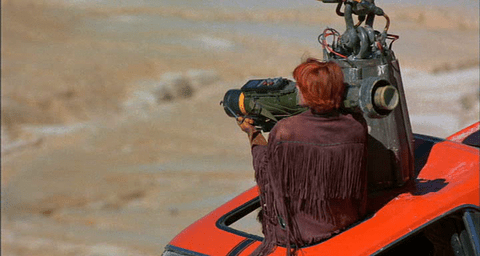
Just watched “Cherry 2000” and LOVED it, a post-apocalyptic schlock adventure that admits it’s a ridiculous genre but with no obnoxious comic relief characters or even any Whedonesque snark, just a weird weird world that they all have to do their best with. A yuppie in the ruling class of a crumbling post-apocalyptic city accidentally kills his sex-bot and hires a tracker to help him find the Robot Graveyard in the wastelands to get a replacement but then the tracker is a fiery attractive lady and you can guess the rest, BUT the aesthetic is amazing—very Terry Gilliam-ish except the female characters get personalities and the ending makes sense.
In town he goes to a singles club but all hookups are marketed through your sex demo reels and your lawyers negotiate the terms of your hookup. (The sex lawyer is an early role by Lawrence Fishburne, FYI)

The warlord of the wastelands is a golf-loving Jack LaLanne type based out of an old motel and all his minions wear Hawaiian shirts and zinc oxide on their noses. All the ominous wasteland graffiti are his inspirational sayings, usually “be yourself and wear sunscreen”, and his wife is this bimbo housewife that happily makes sandwiches for the death mission and then once he dies gleefully takes his place as lord of the wastes
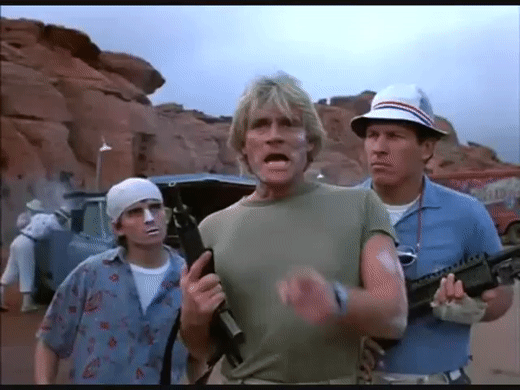
Really forms the bridge between the worlds of, say, Robocop and Demolition Man on the one hand and Mad Max and Tank Girl on the other. This is what’s happening on the West Coast while Judge Dredd is on the East. Escape From New York and/or LA could be in the same setting.
19 notes
·
View notes
Text

July 21, 2022.
The biggest music haul ever had been made. So big that I needed two visits to the same store, Jesus, and fucking Mary to pull it off. High Fidelity’s stock has gotten so stuffed that there were piles and piles of disorganized vinyl records, discs, and cassettes all over the place. Under the bins, on top of the bins, on the floor, up high on the wall that you can’t reach. Mark the owner was so bad with overstock that he moved two blocks down to a bigger space and that wasn’t enough. His downstairs stock room he once boasted was off-limits and even a stack of vinyl records almost fell on me from above. It was a literal death hazard - but I survived. You’d think that two round-trips and $893.00 spent would be the penultimate event to cap off another intensive record-store victory tour. No.
There were two other stores I’d yet to visit. Plainview’s Vinyl Bay 777 and Amangansett’s Innersleeve Records. The one time I went to Vinyl Bay- was when I walked out empty-handed because they marked all of their stock three to four times more what other stores sold. There was no reason for me to pay more than I should for a vinyl record I could find elsewhere for a third or fourth of the price. Vinyl Bay was disqualified. That left Innersleeve Records a place of interest. I didn’t go in the previous round and had considered making the ninety-minute trip out to the East End to check it out - until I saw their latest social media post. Ouch! Their prices were even higher than that of Vinyl Bay’s and on new pressings. Vinyl-price cockfighting at its finest. I wanted no part of it. That moment I declared my island run of stores done. Nope. That’s it. I don’t want to hear it any more. La la la la la la fuck you.
Though, there was one store in New York City I was meaning to visit. That was Greenpoint’s Captured Tracks. My show Omega WUSB had just done a three-hour label tribute about the feel-good label and we always played their artists when we found them. They were around for years with no sign of stopping, so why not come take a ride and check it out? Let’s have another bonus round with another city jaunt, shall we?
Late July’s weather isn’t the most colorful but it’s certainly the brightest when it has cloud cover. I stood at the Central Islip platform and look up to see the lit white skies in 80*F weather. I board the train westward to Penn Station and…what a surprise? It’s thunder-storming and raining mercilessly. I didn’t see this coming, so I have no choice but to deal with it.
Deal with it I did. God didn’t give me lemons but instead gave me a 9/2 offsuit. I arrived at Penn Station and transferred to catch the ‘E’ line. It was insufferable. This was a sneak preview of the 7th Circle Of Hell. Everyone dealt with post-rain humidity in a limited underground space and were dying like dogs. I was drenched in sweat and felt like my clothes were falling off. The ‘E’ arrived and what a saving grace. I felt the cold chill of the air conditioner settling on me, erasing the half-an-hour of disgusting unease. The ‘E’ ended its travel and I transfer to the ‘G’ line to Greenpoint. In five minutes it was all over.
I walk up the stairs to Manhattan Ave. and I see nothing but hazy blue skies and sharp sunshine beaming on me, as if the rainstorm never even happened. I’m back at my element. I walk south on Manhattan Ave. to observe and breathe in what was Brooklyn to me. Two blonde women in Polish tongues walk past me as I process the storefronts, the graffiti, sticker vandalism, and cramped crooked sidewalks. I approach and turn the corner on Calyer Street only to learn that I walked past Captured Tracks?! I turn around and I finally found it. The way to The House of Mike Sniper was downstairs. It was a dream, was it? I never had to take a downwards path to any establishment. I hobbled below and here we are: a dense but neatly-packed music store with plenty of boxes of 45”, pricey first- and rare pressings, bins to fumble through, and several lower shelves of records not for sale designated for their Discogs store. It was going to be another intense day digging in the bins.
Three hours and $117.00 later, I finally declared my record-store victory tour of ‘22 finished for good. Nothing else fitting to cap it off with another perfect day in Greenpoint. I walk up Manhattan Avenue with my tote of vinyl records away from the clear sharp sun as its intensive rays bake into my skin. The skies bluer and the air much dryer. Then I notice something I didn’t expect to find: Sunshine Laundromat. Here’s another place I was dying to visit since my post-operation; one which my radio station friends decided to go without me. I’m here, so why not? I’m about to walk into a surreal dream - in reality.
I walk in and I couldn’t believe it. It’s the first time I walked into a laundromat since my stay in Lindenhurst. I walk down the narrow space past the rogue pinball tables and there was the secret door disguised as stackable units that led into the back room arcade. A speak-easy if I ever saw one. All that stood between me and that Murphy door was the nice lady who ran the place. She told me they would re-open the pinball speakeasy as soon as the city OKs their alcohol license. Sounds hopeful if you ask me. I thanked her for the good news and walked out knowing there will be another reason to come back to Brooklyn.
I head on to the ‘G’ to transfer and ride on the ‘E’ line back to Penn Station. It’s 7PM and the visible sun is coming down for the day; slowly sinking against the perfectly clean sky blue backdrop with no clouds in sight. I board the train back home and take a window seat moving backwards. The train motions and the blinding sun peeks through the window as I feel the frigid blanket of the air conditioner. There’s a sparse placement of riders in the same car as me. I can sit and relax knowing that my entire run of spending money all over New York City and Long Island has come to a satisfying end.
New Mexico Stargazers: “Santa Fe Cruiser”
Did You Die: “We Can Do Whatever”
True Dreams: “Reaching”
Vasco Rossi: “Siamo Soli”
Queensway: “Return To Dirt”
Pinch Points: “Am I Feeling OK?”
Public Service: “O Sabine”
Offset: Spectacles, The: “Snags”
Grimes: “Shinigami Eyes”
Schedule 1: “Show Your Children”
Mom: “Things Come Into Place”
Paper Dollhouse: “Swans”
Bad Kiss: “Gimme Action”
Strangers With Guns: “Somebody Needs A Hug’
Offset: Spectacles, The: “Color”
Offset: Spectacles, The: “Dead Air”
Deeper: “Only A Shadow”
Totally Unicorn: “All”
Paper Dollhouse: “Moon”
Spellling: “Queen Of Wands”
Krallice: “Crystaline Exhaustion”
Daniel Johnston: “In A Lifetime”
Sasami: “Say It”
INVSN: “Slow Disco”
Traps PS: “Voids”
Life In Vacuum: “9 To 5”
Jesus Fucking Christ: “Sadistic Madness”
Black Dresses: “Hertz”
Free Love: “May You Be The Mother”
Belk: “Question Of Stress”
Michael Berdan: “God Won’t Help Me (Cause Man Won’t)”
2 notes
·
View notes
Text
Day 18 - Burgos to Hornillos
Today we left the rolling hills east of Burgos and entered the Meseta, the large flat plains between Burgos and Leon. This is where the psychological strength has to kick in because they are meant to be featureless and endless.
Our walk today was 13 miles to Hornillos. We left the Airbnb at 7, dropped the big bags at a local bar to be picked up, but then stayed on for breakfast as our first stop would be over 6 miles away. We were walking by half 7, passing the cathedral on the way out.
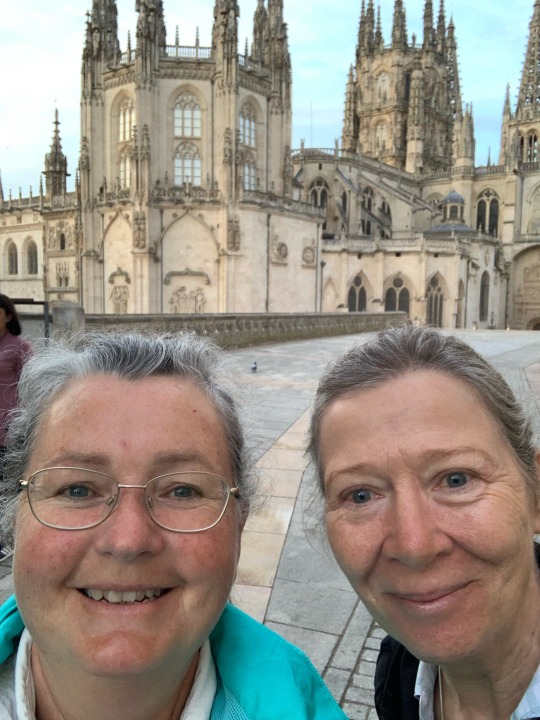
The walk out was considerably shorter and much more pleasant than the walk in, passing the university on the way. But we didn’t really get any solitude until after our 6 mile stop as the path passed by and over main roads and motorways. And always in the background there was the noise of a large works, possibly a cement works as we had seen a few of them already. We passed a sign that said 501kms to Santiago, we’re getting closer!
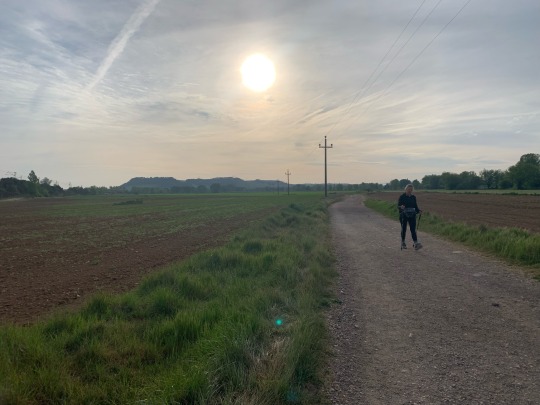


Our coffee stop was at Tardajos in a very local cafe on a main road. After that we walked on quiet country roads heading for our meseta climb.
At the end of the next village was a small church - Ermita de la Virgen de Monasterio - whose doors were open and from which we could hear music. When we went in there was an older lady who stamped our Camino passports, gave us each a blessing and a small token to take with us. We were both really moved by the gesture and the place, and sat for a while composing ourselves listening to the music.

We then started our climb onto the Alto Meseta. It’s a gentle climb and taking a mile or two to reach another 100m, but the landscape changes into something much more barren with very little shade or cover. The Welsh have even been here according to the graffiti on a directional sign.

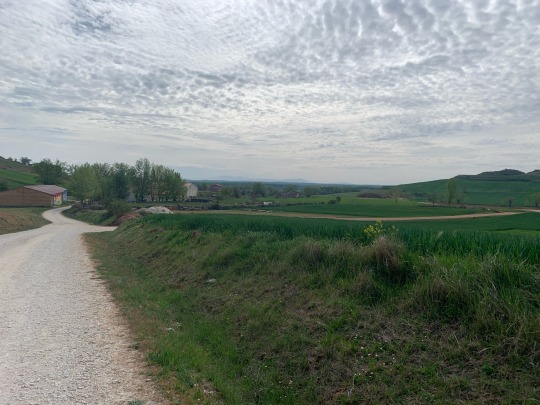
We stopped at one point to change from our shoes into our sandals, trying to stay out of the sun by huddling under a bush that I thought was bigger than it was! The weather has been a lot warmer today, up to 27 degrees with very little wind.

The view from the top down to Hornillas was stunning, quite something else.

We reached the Albergue about 12:30. We’re glad we had reserved our places as it, and most of the other places in the village, were also full, and we saw people having to take taxis elsewhere to find somewhere to stay.
After settling and having showers we took a walk up to the village for a beer in the local bar. It was nice sitting on a bench in the shade planning our next few days and weeks. I think we’re in a bit of a panic mode as many places are booked out already. So we’ve planned where we’ll walk and have contacted many places to try to reserve beds. We’re definitely going to be in Leon by next weekend.
It’s nice how our Camino family is growing. Scott is at the hostel, along with Tim and Alex (the Texans) whom we sat with for dinner. I also brought out a bit of my French again with a couple next to me from near Nantes, and met another American couple where the wife was originally from Northern Ireland.
Dinner was a communal meal of salad, paella and a yoghurt type of pudding. There must have been about 30 of us all sat around a long table chatting.
It’s now time to settle down for bed, evenings are not late as everyone needs to be up early.
8 notes
·
View notes
Text

CHAKA by Union Station, April 2022
#los angeles#california#photography#google pixel#tybg#fyp#photos#my photos#pictures of la#chaka#street art#graffiti#graffitiart#la graffiti#east la#dtlaphotography#DTLA#union station
7 notes
·
View notes
Text
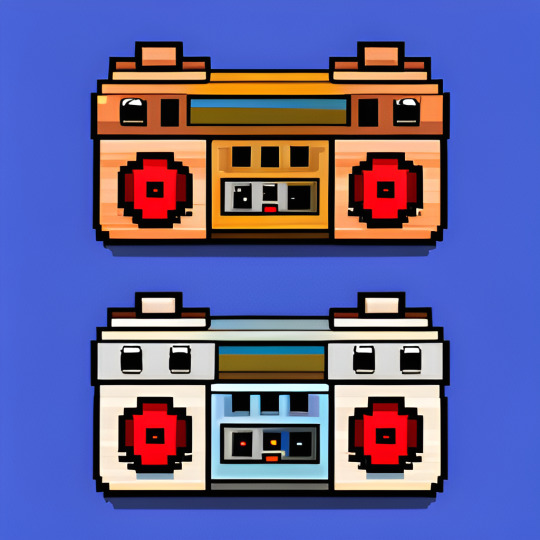
Hip-Hop: The Most Listened To Genre And Its Subgenres
Hip-hop is a cultural movement that emerged in the late 1970s in the Bronx, New York. It encompasses various elements such as rap, DJing, breakdancing, and graffiti art. Hip-hop music is characterized by rhythmic spoken words accompanied by beats, samples, and scratching. It's a music genre, a lifestyle, a language, and a way of expression. It has influenced many aspects of pop culture, such as fashion, film, television, sports, and politics. Hip-hop has also spawned many subgenres and styles over the years, reflecting its artists' and fans' diversity and creativity.
Popularity Around the World
Hip-hop is the most popular music genre in the United States and the United Kingdom. In 2021, hip-hop accounted for 27.64% of all music consumption in the U.S., measured by equivalent album units. It also dominated the on-demand streaming market, with 29.39% of all streams coming from this genre.
Hip-hop is also popular in other parts of the world, such as Canada, France, Germany, Japan and South Korea. According to Spotify, hip-hop is the most listened-to genre globally, with over 9 billion streams per month. Some of the most popular hip-hop artists worldwide include Drake, Eminem, Kanye West, Jay-Z and Kendrick Lamar.
Subgenres and Styles
Hip-hop has grown and changed over the past five decades. It encompasses a variety of styles and influences, some of which have become mainstream and some of which have remained underground. This article will explore some of the major subgenres and styles of hip-hop music.
Old-school hip-hop
Hip-hop music traces its roots back to the late 1970s and early 1980s, with its earliest form featuring basic drum beats, turntablism, and MCing. Notable pioneers of old-school hip-hop include Grandmaster Flash, Afrika Bambaataa, Kurtis Blow, and Run-DMC.
New-school hip-hop
The second wave of hip-hop music, known as the new-school hip-hop movement, surfaced in the mid-1980s and continued until the early 1990s. It brought forth a diverse and intricate collection of beats, lyrical styles, and influences from different musical genres, such as jazz, rock, and funk. The trailblazers of this genre include LL Cool J, Public Enemy, Beastie Boys, and N.W.A.
Golden age hip-hop
The late 1980s to early 1990s marked the golden age of hip-hop, a time when artistic quality and innovation flourished in the genre. This era showcased a range of sounds, themes, and techniques from various regions and subcultures, featuring legends such as Rakim, Big Daddy Kane, KRS-One, De La Soul, and A Tribe Called Quest.
Gangsta rap
During the late 1980s and early 1990s, a subgenre of hip-hop emerged, which dealt with themes like crime, violence, drugs, and social issues. This form of music was heavily influenced by the everyday struggles of people living in inner-city neighborhoods and often attracted controversy and criticism. Gangsta rap was pioneered by artists such as Ice-T, N.W.A., Snoop Dogg, and Tupac Shakur.
Alternative hip-hop
Alternative hip-hop is a subgenre that originated in the late 1980s and early 1990s. It aimed to challenge the traditional norms and conventions of mainstream hip-hop music by integrating elements from other genres like rock, jazz, soul, and folk. Some of the pioneers of this genre are De La Soul, A Tribe Called Quest, The Roots, and Outkast.
East Coast hip-hop
A regional style of hip-hop that originated in New York City and its surrounding areas. It is characterized by complex lyrics, storytelling skills, and sample-based production. Some of the icons of East Coast hip-hop include Nas, The Notorious B.I.G., Wu-Tang Clan, and Jay-Z.
West Coast hip-hop
A regional style of hip-hop that originated in Los Angeles and its surrounding areas. It is characterized by funky beats, synthesizers and gangsta rap themes. Some of the icons of West Coast hip-hop include Dr. Dre, Snoop Dogg, Tupac Shakur, and The Game.
Southern hip-hop
A regional style of hip-hop that originated in the Southern states of the U.S., such as Texas, Louisiana, Georgia and Florida. It is characterized by slow and heavy beats, chopped and screwed vocals, crunk energy and dirty south slang. Some of the icons of Southern hip-hop include Outkast, UGK, Scarface, Lil Wayne and T.I.
Midwest hip-hop
A regional style of hip-hop originated in the Midwestern states of the U.S., such as Illinois, Michigan, Minnesota, and Ohio. It is characterized by fast and complex flows, lyrical dexterity, and diverse influences from other genres such as soul, rock, and techno. Some of the icons of Midwest hip-hop include Eminem, Kanye West, Common, Bone Thugs-n-Harmony, and Tech N9ne.
Trap
A subgenre of hip-hop that emerged in the early 2000s in the Southern U.S., especially in Atlanta. It is characterized by hard-hitting drums, 808 bass, hi-hat rolls, and lyrics about drug dealing, crime and street life. Some of the pioneers of trap include T.I., Gucci Mane, Young Jeezy and Three 6 Mafia.
Conscious hip-hop
A subgenre of hip-hop that emerged in the late 1980s and early 1990s that focused on themes such as social justice, political awareness, spirituality and Afrocentrism. It was influenced by the civil rights movement, black nationalism and the teachings of Islam. Some of the innovators of conscious hip-hop include Public Enemy, KRS-One, Mos Def and Talib Kweli.
Mumble rap
A type of hip-hop that became popular in the mid-2010s is known as mumble rap. This subgenre features slurred or unintelligible vocals, simple beats, and memorable hooks. Some people criticize mumble rap for its lack of meaningful lyrics and technical ability. Notable artists in this category include Future, Lil Uzi Vert, Migos, and Lil Yachty.
These are just some of the main subgenres and styles of hip-hop music. Many more variations and hybrids exist within this rich and diverse genre. Hip-hop is constantly evolving and adapting to new trends and influences, making it one of the most exciting and influential forms of music in the world. Hip-hop has shaped and transformed the music industry and culture for decades. It has given voice to the marginalized, challenged the status quo, and inspired generations of artists and fans. Hip-hop celebrates creativity, innovation, and expression. And it's here to stay.
2 notes
·
View notes
Text

You will be enthralled by Buenos Aires from the moment you arrive. This expansive capital city of South America is so colorful and opulent that it almost looks like Paris, I thought. or Madrid, or Mexico City.
But wait until you see Buenos Aires' abundance of interesting activities. You are going to love the amazing food, amazing culture, and exceptional value!
Tango performances aside, there are other reasons to visit Buenos Aires: the city's top-notch art museums, amazing live music, and art and culture in general. It is a culinary destination as well; steak is the specialty, of course, but there are also alfajores, empanadas, and a thriving international food scene.
Furthermore, Buenos Aires is a fun city with lots of interesting and quirky bars, late-night dance clubs, and exciting live events. Buenos Aires is among the best-value major cities in the world due to its abundance of affordable options and surprisingly low prices.
I went to Buenos Aires for the first time on my own when I was twenty-four years old, and I recently went back for a longer visit over fifteen years later. Has the city undergone changes? Has it ever happened? I have also changed.
I cannot wait to tell you about the top activities in Buenos Aires. Come with me as we examine!
Contributors to this post include Dale Peterson and Adventurous Kate. It was published in March of 2024.
Buenos Aires is so much more than this picture suggests! through Shutterstock.
Activities in Buenos Aires
Examine Buenos Aires's Various Neighborhoods
Discovering each of the many neighborhoods in Buenos Aires is one of my favorite things to do while visiting the city. You could visit every neighborhood in Buenos Aires for months and still not see them all.
One of the best ways to explore lots of neighborhoods is to take the hop-on, hop-off bus tour. From above, you will be able to see all the best locations in the city and have a comprehensive overview of everything.
However, if you’re short on time, this private walking tour takes you to several of the city’s best neighborhoods in one day.
These are the top neighborhoods in Buenos Aires that I suggest you prioritize if you have more time to spend there:
Palermo
Palermo is a trendy, upscale neighborhood with some of the best restaurants, bars, and clubs in the city. It’s actually a huge neighborhood divided into sub-neighborhoods (including Palermo Chico, Palermo Soho, and Palermo Hollywood.)
If you’re familiar with the neighborhoods of Mexico City, you’ll understand what I mean when I say that Palermo reminds me a lot of Roma Norte and La Condesa. In New York, Palermo would be a massive East Village.
Palermo is home to many of my favorite restaurants in Buenos Aires, including Sacro (vegan), Don Julio (steakhouse), Mishiguene (Jewish Argentine cuisine), and La Carnicería (Argentine meat).
In Palermo Soho, you’ll find many of the coolest spots in the city concentrated around the lively Plaza Serrano. In Palermo Chico, the oldest part of the neighborhood, you can explore some of the city’s best museums, like the Museo de Arte Latinoamericano de Buenos Aires (MALBA).
To learn more about Palermo, check out this graffiti and street art walking tour. Accompanied by a local guide, you’ll learn about Palermo’s history and the political origins of its street art. Keep an eye out for Conan O’Brien’s mural with Lionel Messi and Pope Francis—it cracked me up!
El Caminito in La Boca, via Erwin Widmer on Shutterstock.
The Boca
Historically, one of Buenos Aires' most diverse neighborhoods has been this vibrant, working-class area. When immigrants came to Argentina in the late 19th and early 20th centuries, La Boca was the main port of entry, much like New York City was for them entering the United States.
La Boca's most well-known location is El Caminito, a vibrant street dotted with old conventillos, or boarding houses. This street is featured in any photo you may have seen of La Boca. Benito Quinquela Martín, a local artist, spearheaded the neighborhood's revitalization beginning in the 1950s.
To truly understand La Boca's history, I highly suggest taking a guided tour of the area. An excellent method to thoroughly explore La Boca is with this guided walking tour.
Remember that pickpocketing and minor crimes make La Boca one of the neighborhoods in Buenos Aires where you should be even more cautious.
The most elegant street in Recoleta is Avenida Alvear. via Shutterstock user AlexCorv.
Recupe y Retiro
Strolling around Recoleta and Retiro, you could honestly wonder if you were in Paris or Latin America. Several of the buildings in these posh neighborhoods are reminiscent of the Haussmannian architecture of Paris and are home to upscale stores and hotels.
The Cementerio de la Recoleta, one of the most distinctive and exquisite cemeteries on earth and, in my opinion, a must-see attraction in Buenos Aires, is located in Recoleta.
The enormous clock tower known as the Torre Monumental honors Argentina's independence and is located in Retiro. The nearby park is a well-liked gathering spot for the community.
Buenos Aires' San Telmo is a bohemian neighborhood!
The San Telmo
Another European-style neighborhood that, in my opinion, could just as easily be placed in Madrid or Rome is San Telmo. The outdoor Feria de San Telmo market is held on Sundays, which makes this artsy, bohemian neighborhood very popular.
Weekends are a great time to watch at the bustling Plaza Dorrego, which is a popular place for street tango. Because there are so many exciting late-night bars in San Telmo, it is also the ideal location for going out late.
But San Telmo is another neighborhood to be on your guard because of an increased number of small-time crimes, such as pickpocketing at the bustling market.
Puerto Madero skyscrapers, sourced from Shutterstock.
Madero Puerto
Situated near Buenos Aires' main port, Puerto Madero is a chic and contemporary neighborhood that makes for a pleasant stroll. It is the newest area of the city, full of gleaming skyscrapers, and it is close to San Nicolas, home to many of Buenos Aires' most significant landmarks.
For a really unique experience, you can enjoy a sunset cruise with an open bar in Puerto Madero. For an hour, as the sun sets over the water, you will sail down the Rio de la Plata and enjoy views of the city.
The US has the White House; Argentina has the Casa Rosada!
See the Most Important Sites in San Nicolas, Buenos Aires
You can spend an afternoon touring the many significant landmarks in San Nicolas, a historic neighborhood. The Casa Rosada, also known as the Pink House, is the most well-known. It serves as the president of Argentina's official office.
It is situated on the large Plaza de Mayo, which also houses the Buenos Aires Metropolitan Cathedral and other significant buildings.
The Obelisco, a colossal monument honoring Buenos Aires' founding, and the Avenida 9 de Julio, one of the world's broadest avenues, are also located in San Nicolas. These are Buenos Aires' main attractions!
One of the most important things to do in Buenos Aires is to see a tango show! via Shutterstock via Gary Yim.
Explore Buenos Aires' Tango scene.
Tango is an experience that should not be missed while visiting Buenos Aires. The tango is the national dance of Argentina and a mainstay of Buenos Aires culture. There are numerous ways to enjoy tango in the city.
Attending a tango performance is the first step. These events primarily serve tourists and are held in stunning historic locations throughout Buenos Aires. La Ventana is a popular tango show, or you can catch a performance at Teatro Astor Piazzolla.
Going to a milonga is an additional option. The locals go out to dance for fun on these tango evenings. To learn about upcoming milongas, check local forums or ask around, as they are not very publicly announced in English. I attended one once, and I had some of my best people-watching experiences ever.
Tango performances are also available in real time on the streets of Buenos Aires. The Sunday market in San Telmo and the El Caminito neighborhood of La Boca are two of the best places to do this.
Although it is free to watch street tango, do not forget to tip the dancers!
At last, you can become a proficient tango dancer! Take a private tango lesson to learn the basic steps of the tango from a pro.
Visiting Recoleta Cemetery is one of the best things to do in Buenos Aires.
Go to Recoleta Cemetery.
Even if you are not usually into cemeteries, I highly suggest visiting Recoleta Cemetery, as it is one of the most famous cemeteries in the world. This city of the dead, with its rows of massive stone mausoleums, is well worth a visit.
Numerous well-known Argentines are buried there, notably Eva Peron (her grave is easy to miss!).
Taking a guided walking tour is highly recommended to get the most out of the cemetery. You will discover more about the past of the graveyard and the individuals interred there. The cost of the walking tour is $10 USD, and cemetery admission is also an additional expense. Due to the unstable Argentinean currency, the admission fee varies, but it is approximately $7 USD and can only be paid with a credit card.
Because this is a well-known tourist destination, you should be on the lookout for pickpockets. You can bet that when I got back, I kept a close eye on my bag because I had actually been pickpocketed near the cemetery back in 2008.
The Ateneo Grand Splendid was amazing! What a memorable encounter!
See the Grand Splendid, El Ateneo
El Ateneo Grand Splendid is one of the most beautiful bookstores in the world. This 1919 theater, converted into a magnificent bookstore, is a sight to behold on Instagram.
Bibliophiles should not miss this magnificent bookstore, which features multi-tiered balconies, frescoed ceilings, and exquisite original details. I was overjoyed beyond measure!
The books are mostly in Spanish, with a tiny amount in English. In addition, there is a cafe and lots of comfortable spots to read.
Recoleta Cemetery and El Ateneo Grand Splendid are both close by, so I recommend taking a look at both while you are in the area.
Experience La Bomba de Tiempo
La Bomba de Tiempo is a performance like no other, and one of the wildest nights out I’ve ever had! If you’ll be in the city on a Monday night, you can’t miss this energetic performance.
It’s an incredible live percussion show, and it’s popular with locals and tourists alike. Every performance is unique because it’s based on improvisation between the conductor and the musicians. And everyone is dancing and jumping around to it all!
The show takes place at the Ciudad Cultural Konex. Tickets are 3,200 ARS ($4 USD) and can be purchased online.
Art on display at MALBA, my favorite museum in Buenos Aires, via Brester Irina on Shutterstock
Visit Buenos Aires’s Many Museums
Buenos Aires is a city of incredible museums. If you’re looking for an indoor activity to do on a rainy day or a day when it’s too hot outside, you can easily spend a few hours browsing one of these great museums.
The MALBA (Museo de Arte Latinamericano de Buenos Aires) is my personal favorite, housing an impressive collection of Latin American art.
Another must-visit museum for art lovers is the Museo Nacional de Bellas Artes, which features noteworthy works from artists including Picasso, Van Gogh, El Greco, and more.
A smaller museum worth a visit is Museo Evita, which is dedicated to the life and works of Eva Perón. This museum will give you more insight into one of Argentina’s most polarizing historical figures and features some really cool exhibits, including many of Evita’s iconic outfits. She was tiny!
Some other museums to check out are the Palace of Running Waters (an offbeat museum housed in a historic water pumping station) and the Museo Nacional de Arte Decorativo, which is housed in an opulent early 20th-century mansion.
San Telmo Market gets so busy!
Visit San Telmo Market on a Sunday
One of the best things to do in the bohemian San Telmo neighborhood of Buenos Aires is visiting its famous Sunday market. The indoor Mercado de San Telmo is open every
day of the week, but on Sundays, a large outdoor market called the Feria de San Telmo takes place, filling the streets around the market hall with hundreds of stalls.
It’s a great time, with plenty of opportunities for shopping, dining, and watching live tango on the street. You can also explore the antique shops and art galleries on the surrounding streets in San Telmo.
The streets around the market get very crowded on Sundays, so be extra careful about watching your belongings, as it’s a popular spot for pickpockets.
Our steak at Don Julio, absolutely beautifully done.
Eat at a Fine Steakhouse
Buenos Aires is home to some of the best steakhouses on the planet, and if you’re a meat-eater in the least, you need to try it! Two of the best spots in town are Don Julio and La Cabrera.
I’ve been to both steakhouses, and most recently ate at Don Julio. This meal was expensive (honestly, the only significantly expensive meal in Buenos Aires, even though we ate at lots of nice places), but the steaks, the sides, the wine, and the atmosphere were top-notch.
Don Julio is an experience, from the tomato vines covering the restaurant to the sparkling wine they serve you while waiting for your table. My top recommendation is to make a reservation VERY early, because they go fast.
And if you’re not a meat-eater, have I got the place for you — Sacro. Charlie and I ended up at this high-end vegan restaurant on a whim, and SURPRISE — it was the best meal we had in Buenos Aires.
Frank’s in Palermo Hollywood is a cocktail bar worth visiting!
Cocktail-Hop at Buenos Aires’s Unique Bars
Buenos Aires is filled with quirky and unique cocktail bars, especially in Palermo. If you’re looking for a fun night out, cocktail-hop your way through the neighborhood!
Nearby in Palermo Hollywood, you’ll find Frank’s, a speakeasy-style bar with hidden rooms and passageways, all outfitted in dark wood and crystal chandeliers. It feels like you’ve time traveled to a mafia den during the prohibition era!
A few other bars I enjoyed were Tres Monos, which is dark and has a tiki feel to it, and Backroom Bar, which has cool cocktails and jazz shows. Both of these bars are located in the trendy Palermo Soho neighborhood.
Palacio Barolo in Buenos Aires, via Walkabout Photo Guides on Shutterstock
Tour Palacio Barolo
Palacio Barolo is one of the most distinctive buildings in Buenos Aires due to its eclectic architectural style that combines Art Nouveau, Art Deco, and Gothic elements. This historic office building, which was inspired by Dante’s Divine Comedy, opened in 1923.
Today, Palacio Barolo is still home to offices and businesses, but it’s also open for guided tours. This 1.5-hour guided tour will allow you to learn more about the history of this building and explore various spaces, including the upper balconies, which offer some of the best views you’ll see in the city.
For an even more unique experience, this evening tour offers a chance to see Palacio Barolo by night and enjoy a glass of wine as you explore the building with a knowledgeable guide.
Boca Juniors Football Fans, via Katarzyna Citko on Shutterstock
Watch a Football Game
One of the top things to do in Buenos Aires is seeing a football game (meaning soccer, my fellow Americans). Argentines go wild for fútbol, and watching a match is an experience you won’t soon forget. There are numerous football teams in Buenos Aires, but Boca Juniors is one of the most popular.
You can watch Boca Juniors play at La Bombonera, a famous football stadium in the neighborhood of La Boca.
I wouldn’t go solo to a game or even buy tickets on your own unless you have a local who knows what they’re doing. It’s difficult to score tickets, and scams abound. Instead, I’d recommend joining a tour, where they will make sure you have the best experience possible. Know that games can get pretty rowdy!
This tour company is best for getting tickets to a Boca Juniors game. They also have tickets for other teams in Buenos Aires, including River Plate and San Lorenzo.
If you aren’t able to make a game, you can still take a tour of La Bombonera, as well as El Monumental, the stadium of the River Plate football team. This five-hour guided tour is the perfect experience for football enthusiasts.
Cyclists in Buenos Aires, via Sandra Moraes on Shutterstock
Explore Buenos Aires by bike
Buenos Aires is a huge city, so exploring by bike makes it easier to cover more ground. The city is quite flat, and there are plenty of bike lanes, so it’s accessible even to beginner cyclists. This half-day bike tour is a great way to discover the city on two wheels.
You’ll explore several important neighborhoods in Buenos Aires, including San Nicolas and La Boca. You’ll also cycle through the Reserva Ecologica, the largest park in Buenos Aires, which is located along the waterfront, before finishing the famed Plaza de Mayo.
Come early to Cafe Tortoni, or you’ll be waiting in line forever.
Grab a morning coffee at one of the “Bares Notables”
Buenos Aires is home to a collection of historic cafes called “bares notables” that are beautifully preserved and just as popular today as they were decades ago. In these cafes, time stands still — in the best way.
The most famous of the bares notables is Cafe Tortoni, a French-style cafe dating back to 1858. However, this cafe is extremely popular and it always has a line — either go right when they open for the day, or hit up a lesser-known cafe for something special.
Las Violetas is a great cafe to check out for a cup of coffee and some sweet pastries or a slice of cake. You can find a full list of the historic cafes in Buenos Aires on this website.
Alfajores, like this chocolate raspberry pistachio alfajor, are essential to any Buenos Aires food tour!
Go on a Buenos Aires Food Tour
The best way to experience the cuisine of Buenos Aires is on a local food tour! A food tour offers a great introduction to the delicious cuisine you’ll find all across the city. Most people think of steak when they think of Buenos Aires, but there’s so much more to Argentine food than that!
This food tour will take you through the trendy Palermo neighborhood, stopping along the way at multiple eateries, from local hole-in-the-wall spots to fine dining restaurants. You’ll try eight different dishes, as well as plenty of Argentine wine!
Another unique activity is the Argentine Experience, an interactive cooking class and tasting. You’ll learn how to prepare empanadas, mate, and alfajores, some of the most popular food and drinks in Argentina. You’ll also enjoy a steak dinner paired with four local wines.
You can’t out-meat an Argentine!
Try authentic Argentine asado
An asado is a traditional Argentine barbecue with LOTS of meat. It refers to both the dish itself and the way the meat is prepared.
If you want to try a typical Argentine asado, this is a great experience to book. Come hungry because over the course of several hours, you’ll enjoy a huge meal including appetizers, various cuts of meat, and dessert, all accompanied by local Malbec wine.
Another cool experience is this rooftop asado in Buenos Aires. You’ll learn about what goes into the preparation of each of the dishes you’ll enjoy, including several types of meat, empanadas, and dulce de leche cake for dessert. And you’ll get to enjoy a great ambiance as you dine outdoors on a rooftop in the trendy Palermo neighborhood.
One more option is this asado experience that takes place in the garden of a local family’s home. You’ll get to help the grill-master chef prepare your asado for dinner, as well as learn the secrets of making the perfect chimichurri sauce to accompany it.
Mate and medialunas — that’s what Buenos Aires does! Via Shutterstock.
Sample Argentinian mate
If you’re wondering what those pots people are sipping from throughout Argentina, it’s mate (MAH-tay). Mate is a caffeinated herbal beverage that is extremely popular in Argentina. You’ll see people drinking it all day long from little gourd-like cups and metal straws.
Mate is a bit of an acquired taste, but it’s something you must try while in Argentina!
This unique mate tasting experience will teach you exactly how to prepare mate like a real Argentine and give you a taste of this traditional beverage.
Get ready for the strong, dark reds of Argentina!
Go wine tasting
Argentina is famous for its wines, especially deep, intense reds like Malbecs. If you can’t make it to the wine hub of Mendoza on this trip, go wine-tasting in Buenos Aires instead! There are plenty of ways to experience Argentina’s wine without straying far from the capital.
While it’s true that most vineyards and wineries are located in the central part of the country around Mendoza, there are also several just outside Buenos Aires.
This full-day tour takes you to Bodega Gamboa, a popular winery on the outskirts of Buenos Aires. It’s perfect for Malbec aficionados, as you’ll get to sample several varieties of this full-bodied red. You’ll also enjoy a picnic lunch in the vineyards with delicious local cheeses.
Or you can try this tango lesson and wine tasting in Buenos Aires. You’ll spend an hour learning about Argentina’s national dance and practicing the basic steps of tango. Then, you can sit down and enjoy a one-hour tasting of local wines, with some freshly-made empanadas to snack on.
A show at Teatro Colon is one of the truly special things to do in Buenos Aires. Via T photography on Shutterstock.
Visit the Magnificent Teatro Colón
Teatro Colón regularly ranks among the best opera houses in the world. This opera house in Buenos Aires opened in 1908 and is renowned for its opulent architecture and interiors. It’s also said to have the best acoustics in the world for performing opera.
While in Buenos Aires, touring the theater is a must if you love visiting beautiful spaces. You can only visit the theater on a guided tour, which you can reserve tickets for here. On a guided tour, you’ll learn more about the history of the building and what makes it so special.
You’ll have a chance to explore several halls inside the opera house, as well as the auditorium itself.
For an even better experience, you can attend a performance at the Teatro Colon. You can see what’s currently on and purchase tickets to performances on the theater’s website.
Centro Cultural Kirchner, via Brester Irina on Shutterstock
Attend a Cultural Event in Buenos Aires
As a world-class capital city, Buenos Aires is home to some great venues where you can attend cultural events for free or cheap. One of the best such venues is the CCK (formerly Centro Cultural Kirchner), which is one of the largest cultural centers in the world.
The center hosts regular concerts and other performances. All events are free, but you will need to reserve tickets online (and spots fill up quickly!)
Usina del Arte is another cultural center located in the vibrant La Boca neighborhood. The cultural center, which is housed in a former power plant, also has a regular schedule of concerts, performances, and art events. Almost all events are free.
For something a little different, head to a horse race at Hipódromo de Palermo. This historic venue hosts horse races several days per week. Horse racing has been very popular in Buenos Aires since the 19th century, and attending a race is a unique cultural experience.
You can attend races for free every Saturday at the Hipódromo de Palermo.
Polo is surprisingly popular in Argentina! Via Shutterstock.
Learn about polo
While football may be the most popular sport in Argentina, you might be surprised to learn that polo is also hugely popular, especially in Buenos Aires. This is due to the prevalence of horses and the influence of gaucho (cowboy) culture in Argentina.
The Campo Argentino de Polo is a massive polo field located in the heart of Palermo. This venue hosts some of the most important polo events in the country.
You can play polo yourself on this half-day tour from Buenos Aires, where you’ll learn about polo from a pro and have a chance to saddle up and hone your skills.
Or, if you’d prefer to watch from the sidelines, this tour includes admission to a nighttime polo match plus unlimited drinks and snacks.
Learning to make Argentine empanadas is a souvenir skill you can enjoy forever! Via Shutterstock.
Take an Argentine cooking class
If you want to learn how to cook some staples of Argentine cuisine while you’re in Buenos Aires, take a cooking class! This is a great way to learn more about the history and culture of Argentina and its food. You’ll also get to try your hand at preparing some classic dishes (and, of course, taste-test the results!).
In this 3-hour cooking class, you’ll learn how to prepare empanadas and alfajores, two of the most common snacks in Argentina. Empanadas are made with flour and stuffed with cheese, meats, corn, or other fillings. Alfajores are delicate cookies filled with dulce de leche, a sweet caramel-like sauce that decorates many a sweet dish in Argentina. This class is a great introduction to Argentine cuisine.
For a more in-depth experience, consider this 4-hour cooking class. You’ll prepare a multi-course meal with dishes like chipa (a yuca-based cheesy bread), corn stew with veal, and dulce de leche crepes for dessert.
With both of these experiences, you’ll work alongside a local chef who will show you the right techniques for crafting these delicious dishes while also explaining their history and significance.
A pretty garden in the Recoleta neighborhood.
Wander the city gardens
While there are several green spaces throughout Buenos Aires, you’ll find the biggest and the best in Palermo. Here, there are multiple interconnected public parks and gardens to explore. The locals of Buenos Aires love this area, which is known as the Bosques de Palermo (Palermo Woods), for walking, cycling, and roller skating.
The Japanese Garden is a must-visit. This tranquil oasis opened in 1967 to celebrate a visit from Japan’s emperor and his wife. There’s a small admission fee of 1,500 ARS ($1.85 USD), but it’s worth the cost to stroll around this relaxing garden. There’s also a Japanese cultural center and restaurant inside the garden.
Nearby, the Parque El Rosedal is also worth visiting. This sprawling, elegant park is filled with flowers, including numerous varieties of roses. While you can visit year-round, it’s most beautiful in the summer when the roses are in bloom.
You can also check out the Buenos Aires Botanical Gardens while you’re in the area. This is a smaller garden, but it’s perfect to visit on a hot day because there’s plenty of shade.
Planetario Galileo Galilei, via Andres Conema on Shutterstock
Stargaze at Planetario Galileo Galilei
After you’ve discovered the parks and gardens of Buenos Aires, head over to the Planetario Galileo Galilei for some stargazing. This planetarium is located close to the parks, and it resembles a giant UFO.
You can purchase tickets to a stargazing show inside the planetarium for 3,000 ARS ($3.68 USD.) It’s a 45-minute show, and it’s important to note that it’s all in Spanish.
There’s also a small museum with exhibits at the planetarium.
The Tigre Delta is full of surprises, via Shutterstock.
Take a day trip to the Tigre Delta
One of the best day trips from Buenos Aires is the Tigre Delta. If you ask my friends in Buenos Aires, they will always recommend this as their top day trip from the city.
The Tigre Delta, one of the largest natural deltas in the world, is just a 1.5-hour boat ride away from Buenos Aires. It’s home to cute little towns, buildings with interesting architecture, and low-lying wetlands.
This day tour from Buenos Aires will take you by boat to the Tigre Delta, with stops in historic San Isidro and Tigre where you’ll be able to explore local markets and sample homemade empanadas.
A day trip to Colonia del Sacramento is one of the best things to do in Buenos Aires!
Take a day trip to Colonia del Sacramento, Uruguay
Did you know that you can visit another country on a day trip from Buenos Aires? The town of Colonia del Sacramento in Uruguay is just one hour and 15 minutes by ferry from Buenos Aires.
This charming small town, a UNESCO World Heritage Site, is well worth a visit, with picturesque cobblestone streets, colonial architecture, cute cafes, and artisan shops.
You can visit Colonia del Sacramento on your own (I recommend booking ferries in advance using DirectFerries, as the ferry company wouldn’t accept foreign credit cards) or with a group tour.
This group tour to Colonia del Sacramento includes hotel pick-up and drop-off, ferry tickets, and a two-hour walking tour in Colonia. You’ll also have a professional guide with you all day.
If you’re visiting Colonia on your own, I recommend giving yourself five hours for exploration in town, and you’ll want to get an early start — lines for passport control in both Argentina and Uruguay can take a while, and you’ll have to pass through them twice.
Scenes from an Estancia, via Shutterstock.
Take a Day Trip to an Estancia
Another one of the best day trips from Buenos Aires is visiting an estancia, or cattle ranch, in the countryside. Gaucho (cowboy) culture is a huge part of Argentine life, yet most visitors to Buenos Aires have no idea this even exists.
This day tour from Buenos Aires is a great option if you want to visit a ranch. You’ll head out to the Pampas, or plains of Argentina, and visit a traditional ranch where you’ll be able to go horseback riding, watch a folklore show, and enjoy a typical asado lunch of grilled meats.
You’ll also have the chance to watch gauchos at work and visit the small, historic town of San Antonio de Areco.
Inside the Mercado de San Telmo. Watch your back for pickpocketing here!
Is Buenos Aires Safe?
Is Buenos Aires a safe city to visit? How safe? Well, to start, the vast majority of travelers go to Buenos Aires and have a great time, with no bad incidents.
But this is a city where you need to be more vigilant about pickpocketing and theft. I liken Buenos Aires to Paris or Barcelona — a great city, but absolutely crawling with pickpockets, and you should expect them to be among you at any time.
Keep an eye on your belongings, use a good purse that zips, and you may prefer taking an Uber at night rather than public transit. (And be sure to check out my top travel safety tips for women.)
You might have noticed that I mentioned that there are some areas in town where you need to be especially vigilant: San Telmo (especially at the market on Sunday), La Boca and El Caminito, and the area around Recoleta Cemetery (where I myself was pickpocketed on my first day of solo travel EVER in 2008).
Another big issue is that Argentina is going through economic and political instability. The value of the Argentine peso fluctuates continuously, so much that restaurants sometimes change their prices on a daily basis.
There are two separate exchange rates, and you as a tourist can get a better rate for your money. ATMs and credit cards will give you good rates, but you can only take out a small amount of cash at a time.
It’s a good idea to check in on the local news before and during your trip, just so you can be aware of what’s going on. Like any other city, if there’s protest or political event taking place, avoid that neighborhood.
I’ve safely traveled during times of protest in Thailand, France, Greece, and the US and life is usually normal away from the protest areas. Just stay informed.
I saw this mural in Palermo, was perplexed, found out Conan O’Brien had it commissioned for his visit to Buenos Aires, and then I couldn’t stop laughing!
How Much Time to Spend in Buenos Aires
How much time should you spend in Buenos Aires? Honestly, more than you think you need.
I most recently spent a week in Buenos Aires and wish I had spent much longer. Even with seven days, there was so much I didn’t have time to do!
For that reason, I recommend spending at least three full days in Buenos Aires proper so you have time to explore the city properly. If you have a fourth day, that would be a nice opportunity to visit Colonia del Sacramento or the Tigre Delta — or continue exploring the city.
I see a lot of people allot just a day or two to Buenos Aires — often when planning a trip to Patagonia or Antarctica — and if that’s you, consider adding on a few more days.
How to get to Buenos Aires
How can you get to Buenos Aires? As one of the largest cities in South America, Buenos Aires is a major air hub with plenty of international flights from North America and Europe.
There are two airports in Buenos Aires — EZE hosts primarily international flights with some domestic options, and is an hour’s drive from the city, while AEP is within the city (it took us 25 minutes to get there from Palermo) and mainly offers domestic flights.
There are also ferries from the cities of Colonia del Sacramento and Montevideo in Uruguay, and plenty of buses to further destinations in Argentina and beyond. (Just keep in mind that Argentina is a huge country, and bus journeys can be quite long!)
Stay in Palermo to enjoy views of Buenos Aires like this one.
Where to Stay in Buenos Aires
Buenos Aires, as you well know by now, is a huge city with tons of different neighborhoods — so it’s important to choose a good one. My personal favorite neighborhood to stay in is Palermo, with tons of fabulous restaurants and bars, gardens, cool shops, and a lot of buzzing energy.
The following properties are the top-rated options in Palermo.
Top-Rated Luxury Hotel in Palermo: BE Jardin Escondido By Coppola is a luxurious boutique hotel in Palermo Soho where Francis Ford Coppola stayed while shooting a movie in Buenos Aires.
Top-Rated Mid-Range Hotel in Palermo: The best mid-range hotel in Buenos Aires is Magnolia Hotel Boutique, which offers chic and comfortable rooms in the heart of Palermo.
Top-Rated Budget Hotel in Palermo: Palermo Bridge is a solid budget hotel in a great location just a short walk away from Buenos Aires’ sprawling city gardens.
Top-Rated Hostel in Palermo: For budget travelers and backpackers, PH Palermo Hostel is an affordable place to stay in a fun, lively area.
You can visit Buenos Aires year-round, but rain is always a possibility.
Best Time to Visit Buenos Aires
When should you go to Buenos Aires? I feel like there’s never a bad time to visit Buenos Aires – yes, the seasons are flipped from the northern hemisphere, but the city has mild winters that are great for exploring. The climate is a bit more like Houston than Boston, so to speak, so don’t expect any snow in July.
Keep in mind that Buenos Aires’s high season is during the summer months — December to March — and this can often be a hot and humid time to visit. While the city is on the Río de la Plata, you don’t get the cool breezes that you get in coastal cities.
You might want to time your trip for the shoulder season (March to May or September to November) for nicer weather with fewer crowds.
I love El Ateneo Grand Splendid — and Buenos Aires!
Is Buenos Aires Worth It?
Are you kidding me? Buenos Aires is incredibly worth it! I absolutely love this city, and I was most recently reminded of why I love it so much. The culture, the nightlife, the incredible food, all for surprisingly reasonable prices — it all adds up to a world-class city!
I’m already trying to get myself back to Buenos Aires for a third time. We’ll see how that goes.
As for you — I hope you have the best time in Buenos Aires! There’s nowhere else like it.
More on Argentina:
More on South America:
Have you been to Buenos Aires? Any suggestions? Share away!
You will be enthralled with Buenos Aires from the moment you arrive. This expansive capital city of South America is so colorful and opulent that it almost looks like Paris, I thought. or Madrid. or Mexico City.
But wait until you see Buenos Aires' abundance of interesting activities. You are going to love the amazing food, amazing culture, and exceptional value!
Tango performances aside, there are other reasons to visit Buenos Aires: the city's top-notch art museums, amazing live music, and art and culture in general. It is a culinary
destination as well; steak is the specialty, of course, but there is also alfajores, empanadas, and a thriving international food scene.
Furthermore, Buenos Aires is a fun city with lots of interesting and quirky bars, late-night dance clubs, and exciting live events. Buenos Aires is among the best-value major cities in the world due to its abundance of affordable options and surprisingly low prices.
I went to Buenos Aires for the first time on my own when I was twenty-four years old, and I recently went back for a longer visit over fifteen years later. Has the city undergone changes? Has it ever happened? I have also changed.
I can not wait to tell you about the top activities in Buenos Aires. Come with me as we examine!
Contributors to this post include Dale Peterson and Adventurous Kate. It was published in March of 2024.
Buenos Aires is so much more than this picture suggests! through Shutterstock.
Activities in Buenos Aires
Examine Buenos Aires's Various Neighborhoods
Discovering each of the many neighborhoods in Buenos Aires is one of my favorite things to do while visiting the city. You could visit every neighborhood in Buenos Aires for months and still not see them all.
One of the best ways to explore lots of neighborhoods is to take the hop-on, hop-off bus tour. From above, you will be able to see all the best locations in the city and have a comprehensive overview of everything.
However, if you’re short on time, this private walking tour takes you to several of the city’s best neighborhoods in one day.
These are the top neighborhoods in Buenos Aires that I suggest you prioritize if you have more time to spend there:
Palermo
Palermo is a trendy, upscale neighborhood with some of the best restaurants, bars, and clubs in the city. It’s actually a huge neighborhood divided into sub-neighborhoods (including Palermo Chico, Palermo Soho, and Palermo Hollywood.)
If you’re familiar with the neighborhoods of Mexico City, you’ll understand what I mean when I say that Palermo reminds me a lot of Roma Norte and La Condesa. In New York, Palermo would be a massive East Village.
Palermo is home to many of my favorite restaurants in Buenos Aires, including Sacro (vegan), Don Julio (steakhouse), Mishiguene (Jewish Argentine cuisine), and La Carnicería (Argentine meat).
In Palermo Soho, you’ll find many of the coolest spots in the city concentrated around the lively Plaza Serrano. In Palermo Chico, the oldest part of the neighborhood, you can explore some of the city’s best museums, like the Museo de Arte Latinoamericano de Buenos Aires (MALBA).
To learn more about Palermo, check out this graffiti and street art walking tour. Accompanied by a local guide, you’ll learn about Palermo’s history and the political origins of its street art. Keep an eye out for Conan O’Brien’s mural with Lionel Messi and Pope Francis—it cracked me up!
El Caminito in La Boca, via Erwin Widmer on Shutterstock.
The Boca
Historically, one of Buenos Aires' most diverse neighborhoods has been this vibrant, working-class area. When immigrants came to Argentina in the late 19th and early 20th centuries, La Boca was the main port of entry, much like New York City was for them entering the United States.
La Boca's most well-known location is El Caminito, a vibrant street dotted with old conventillos, or boarding houses. This street is featured in any photo you may have seen of La Boca. Benito Quinquela Martín, a local artist, spearheaded the neighborhood's revitalization beginning in the 1950s.
To truly understand La Boca's history, I highly suggest taking a guided tour of the area. An excellent method to thoroughly explore La Boca is with this guided walking tour.
Remember that pickpocketing and minor crimes make La Boca one of the neighborhoods in Buenos Aires where you should be even more cautious.
The most elegant street in Recoleta is Avenida Alvear. via Shutterstock user AlexCorv.
Recupe y Retiro
Strolling around Recoleta and Retiro, you could honestly wonder if you are in Paris or Latin America.
Several of the buildings in these posh neighborhoods are reminiscent of the Haussmannian architecture of Paris and are home to upscale stores and hotels.
The Cementerio de la Recoleta, one of the most distinctive and exquisite cemeteries on earth and, in my opinion, a must-see attraction in Buenos Aires, is located in Recoleta.
The enormous clock tower known as the Torre Monumental honors Argentina's independence and is located in Retiro. The nearby park is a well-liked gathering spot for the community.
Buenos Aires' San Telmo is a bohemian neighborhood!
The San Telmo
Another European-style neighborhood that, in my opinion, could just as easily be placed in Madrid or Rome is San Telmo. The outdoor Feria de San Telmo market is held on Sundays, which makes this artsy, bohemian neighborhood very popular.
Weekends are a great time to people watch at the bustling Plaza Dorrego, which is a popular place for street tango. Because there are so many exciting late-night bars in San Telmo, it is also the ideal location for going out late.
But San Telmo is another neighborhood to be on your guard because of an increased number of small-time crimes, such as pickpocketing at the bustling market.
Puerto Madero skyscrapers, sourced from Shutterstock.
Madero Puerto
Situated near Buenos Aires' main port, Puerto Madero is a chic and contemporary neighborhood that makes for a pleasant stroll. It is the newest area of the city, full of gleaming skyscrapers, and it is close to San Nicolas, home to many of Buenos Aires' most significant landmarks.
For a really unique experience, you can enjoy a sunset cruise with an open bar in Puerto Madero. For an hour, as the sun sets over the water, you will sail down the Rio de la Plata and enjoy views of the city.
The US has the White House; Argentina has the Casa Rosada!
See the Most Important Sites in San Nicolas, Buenos Aires
You can spend an afternoon touring the many significant landmarks in San Nicolas, a historic neighborhood. The Casa Rosada, also known as the Pink House, is the most well-known. It serves as the president of Argentina's official office.
It is situated on the large Plaza de Mayo, which also houses the Buenos Aires Metropolitan Cathedral and other significant buildings.
The Obelisco, a colossal monument honoring Buenos Aires' founding, and the Avenida 9 de Julio, one of the world's broadest avenues, are also located in San Nicolas. These are Buenos Aires' main attractions!
One of the most important things to do in Buenos Aires is to see a tango show! via Shutterstock via Gary Yim.
Explore Buenos Aires' Tango scene.
Tango is an experience that should not be missed while visiting Buenos Aires. The tango is the national dance of Argentina and a mainstay of Buenos Aires culture. There are numerous ways to enjoy tango in the city.
Attending a tango performance is the first. These events primarily serve tourists and are held in stunning historic locations throughout Buenos Aires. La Ventana is a popular tango show, or you can catch a performance at Teatro Astor Piazzolla.
Going to a milonga is an additional option. The locals go out to dance for fun on these tango evenings. To learn about upcoming milongas, check local forums or ask around as they are not very publicly announced in English. I attended one once, and I had some of my best people-watching experiences ever.
Tango performances are also available in real time on the streets of Buenos Aires. The Sunday market in San Telmo and the El Caminito neighborhood of La Boca are two of the greatest places to do this. Although it is free to watch street tango, do not forget to tip the dancers!
At last, you can become a proficient tango dancer! Take a private tango lesson to learn the basic steps of the tango from a pro.
Visiting Recoleta Cemetery is one of the best things to do in Buenos Aires.
Go to Recoleta Cemetery.
Even if you are not usually into cemeteries, I highly suggest visiting Recoleta Cemetery as it is one of the most famous cemeteries in the world.
This city of the dead, with its rows of massive stone mausoleums, is well worth a visit.
Numerous well-known Argentines are buried there, notably Eva Peron (her grave is easy to miss!).
Taking a guided walking tour is highly recommended to get the most out of the cemetery. You will discover more about the past of the graveyard and the individuals interred there. The cost of the walking tour is $10 USD, and cemetery admission is also an additional expense. Due to the unstable Argentinean currency, the admission fee varies, but it is approximately $7 USD and can only be paid with a credit card.
Because this is a well-known tourist destination, you should be on the lookout for pickpockets. You can bet that when I got back, I kept a close eye on my bag because I had actually been pickpocketed near the cemetery back in 2008.
El Ateneo Grand Splendid was amazing! What a memorable encounter!
See the Grand Splendid El Ateneo
El Ateneo Grand Splendid is one of the most beautiful bookstores in the world. This 1919 theater, converted into a magnificent bookstore, is a sight to behold on Instagram.
Bibliophiles should not miss this magnificent bookstore, which features multi-tiered balconies, frescoed ceilings, and exquisite original details. I was overjoyed beyond measure!
The books are mostly in Spanish, with a tiny amount in English. In addition, there is a cafe and lots of comfortable spots to read.
Recoleta Cemetery and El Ateneo Grand Splendid are both close by, so I recommend taking a look at both while you are in the area.
Experience La Bomba de Tiempo
La Bomba de Tiempo is a performance like no other, and one of the wildest nights out I’ve ever had! If you’ll be in the city on a Monday night, you can’t miss this energetic performance.
It’s an incredible live percussion show, and it’s popular with locals and tourists alike. Every performance is unique because it’s based on improvisation between the conductor and the musicians. And everyone is dancing and jumping around to it all!
The show takes place at the Ciudad Cultural Konex. Tickets are 3,200 ARS ($4 USD) and can be purchased online.
Art on display at MALBA, my favorite museum in Buenos Aires, via Brester Irina on Shutterstock
Visit Buenos Aires’s Many Museums
Buenos Aires is a city of incredible museums. If you’re looking for an indoor activity to do on a rainy day or a day when it’s too hot outside, you can easily spend a few hours browsing one of these great museums.
The MALBA (Museo de Arte Latinamericano de Buenos Aires) is my personal favorite, housing an impressive collection of Latin American art.
Another must-visit museum for art lovers is the Museo Nacional de Bellas Artes, which features noteworthy works from artists including Picasso, Van Gogh, El Greco, and more.
A smaller museum worth a visit is Museo Evita, which is dedicated to the life and works of Eva Perón. This museum will give you more insight into one of Argentina’s most polarizing historical figures and features some really cool exhibits, including many of Evita’s iconic outfits. She was tiny!
Some other museums to check out are the Palace of Running Waters (an offbeat museum housed in a historic water pumping station) and the Museo Nacional de Arte Decorativo, which is housed in an opulent early 20th-century mansion.
San Telmo Market gets so busy!
Visit San Telmo Market on a Sunday
One of the best things to do in the bohemian San Telmo neighborhood of Buenos Aires is visiting its famous Sunday market. The indoor Mercado de San Telmo is open every day of the week, but on Sundays, a large outdoor market called the Feria de San Telmo takes place, filling the streets around the market hall with hundreds of stalls.
It’s a great time, with plenty of opportunities for shopping, dining, and watching live tango on the street. You can also explore the antique shops and art galleries on the surrounding streets in San Telmo.
The streets around the market get very crowded on Sundays, so be extra careful about watching your belongings, as it’s a popular spot for pickpockets.
Our steak at Don Julio, absolutely beautifully done.
Eat at a Fine Steakhouse
Buenos Aires is home to some of the best steakhouses on the planet, and if you’re a meat-eater in the least, you need to try it! Two of the best spots in town are Don Julio and La Cabrera.
I’ve been to both steakhouses, and most recently ate at Don Julio. This meal was expensive (honestly, the only significantly expensive meal in Buenos Aires, even though we ate at lots of nice places), but the steaks, the sides, the wine, and the atmosphere were top-notch.
Don Julio is an experience, from the tomato vines covering the restaurant to the sparkling wine they serve you while waiting for your table. My top recommendation is to make a reservation VERY early, because they go fast.
And if you’re not a meat-eater, have I got the place for you — Sacro. Charlie and I ended up at this high-end vegan restaurant on a whim, and SURPRISE — it was the best meal we had in Buenos Aires.
Frank’s in Palermo Hollywood is a cocktail bar worth visiting!
Cocktail-Hop at Buenos Aires’s Unique Bars
Buenos Aires is filled with quirky and unique cocktail bars, especially in Palermo. If you’re looking for a fun night out, cocktail-hop your way through the neighborhood!
Nearby in Palermo Hollywood, you’ll find Frank’s, a speakeasy-style bar with hidden rooms and passageways, all outfitted in dark wood and crystal chandeliers. It feels like you’ve time traveled to a mafia den during the prohibition era!
A few other bars I enjoyed were Tres Monos, which is dark and has a tiki feel to it, and Backroom Bar, which has cool cocktails and jazz shows. Both of these bars are located in the trendy Palermo Soho neighborhood.
Palacio Barolo in Buenos Aires, via Walkabout Photo Guides on Shutterstock
Tour Palacio Barolo
Palacio Barolo is one of the most distinctive buildings in Buenos Aires due to its eclectic architectural style that combines Art Nouveau, Art Deco, and Gothic elements. This historic office building, which was inspired by Dante’s Divine Comedy, opened in 1923.
Today, Palacio Barolo is still home to offices and businesses, but it’s also open for guided tours. This 1.5-hour guided tour will allow you to learn more about the history of this building and explore various spaces, including the upper balconies, which offer some of the best views you’ll see in the city.
For an even more unique experience, this evening tour offers a chance to see Palacio Barolo by night and enjoy a glass of wine as you explore the building with a knowledgeable guide.
Boca Juniors Football Fans, via Katarzyna Citko on Shutterstock
Watch a Football Game
One of the top things to do in Buenos Aires is seeing a football game (meaning soccer, my fellow Americans). Argentines go wild for fútbol, and watching a match is an experience you won’t soon forget. There are numerous football teams in Buenos Aires, but Boca Juniors is one of the most popular.
You can watch Boca Juniors play at La Bombonera, a famous football stadium in the neighborhood of La Boca.
I wouldn’t go solo to a game or even buy tickets on your own unless you have a local who knows what they’re doing. It’s difficult to score tickets, and scams abound. Instead, I’d recommend joining a tour, where they will make sure you have the best experience possible. Know that games can get pretty rowdy!
This tour company is best for getting tickets to a Boca Juniors game. They also have tickets for other teams in Buenos Aires, including River Plate and San Lorenzo.
If you aren’t able to make a game, you can still take a tour of La Bombonera, as well as El Monumental, the stadium of the River Plate football team. This five-hour guided tour is the perfect experience for football enthusiasts.
Cyclists in Buenos Aires, via Sandra Moraes on Shutterstock
Explore Buenos Aires by bike
Buenos Aires is a huge city, so exploring by bike makes it easier to cover more ground. The city is quite flat, and there are plenty of bike lanes, so it’s accessible even to beginner cyclists.
This half-day bike tour is a great way to discover the city on two wheels.
You’ll explore several important neighborhoods in Buenos Aires, including San Nicolas and La Boca. You’ll also cycle through the Reserva Ecologica, the largest park in Buenos Aires, which is located along the waterfront, before finishing the famed Plaza de Mayo.
Come early to Cafe Tortoni, or you’ll be waiting in line forever.
Grab a morning coffee at one of the “Bares Notables”
Buenos Aires is home to a collection of historic cafes called “bares notables” that are beautifully preserved and just as popular today as they were decades ago. In these cafes, time stands still — in the best way.
The most famous of the bares notables is Cafe Tortoni, a French-style cafe dating back to 1858. However, this cafe is extremely popular and it always has a line — either go right when they open for the day, or hit up a lesser-known cafe for something special.
Las Violetas is a great cafe to check out for a cup of coffee and some sweet pastries or a slice of cake. You can find a full list of the historic cafes in Buenos Aires on this website.
Alfajores, like this chocolate raspberry pistachio alfajor, are essential to any Buenos Aires food tour!
Go on a Buenos Aires Food Tour
The best way to experience the cuisine of Buenos Aires is on a local food tour! A food tour offers a great introduction to the delicious cuisine you’ll find all across the city. Most people think of steak when they think of Buenos Aires, but there’s so much more to Argentine food than that!
This food tour will take you through the trendy Palermo neighborhood, stopping along the way at multiple eateries, from local hole-in-the-wall spots to fine dining restaurants. You’ll try eight different dishes, as well as plenty of Argentine wine!
Another unique activity is the Argentine Experience, an interactive cooking class and tasting. You’ll learn how to prepare empanadas, mate, and alfajores, some of the most popular food and drinks in Argentina. You’ll also enjoy a steak dinner paired with four local wines.
You can’t out-meat an Argentine!
Try authentic Argentine asado
An asado is a traditional Argentine barbecue with LOTS of meat. It refers to both the dish itself and the way the meat is prepared.
If you want to try a typical Argentine asado, this is a great experience to book. Come hungry because over the course of several hours, you’ll enjoy a huge meal including appetizers, various cuts of meat, and dessert, all accompanied by local Malbec wine.
Another cool experience is this rooftop asado in Buenos Aires. You’ll learn about what goes into the preparation of each of the dishes you’ll enjoy, including several types of meat, empanadas, and dulce de leche cake for dessert. And you’ll get to enjoy a great ambiance as you dine outdoors on a rooftop in the trendy Palermo neighborhood.
One more option is this asado experience that takes place in the garden of a local family’s home. You’ll get to help the grill-master chef prepare your asado for dinner, as well as learn the secrets of making the perfect chimichurri sauce to accompany it.
Mate and medialunas — that’s what Buenos Aires does! Via Shutterstock.
Sample Argentinian mate
If you’re wondering what those pots people are sipping from throughout Argentina, it’s mate (MAH-tay). Mate is a caffeinated herbal beverage that is extremely popular in Argentina. You’ll see people drinking it all day long from little gourd-like cups and metal straws.
Mate is a bit of an acquired taste, but it’s something you must try while in Argentina!
This unique mate tasting experience will teach you exactly how to prepare mate like a real Argentine and give you a taste of this traditional beverage.
Get ready for the strong, dark reds of Argentina!
Go wine tasting
Argentina is famous for its wines, especially deep, intense reds like Malbecs. If you can’t make it to the wine hub of Mendoza on this trip, go wine-tasting in Buenos Aires instead! There are plenty of ways to experience Argentina’s wine without straying far from the capital.
While it’s true that most vineyards and wineries are located in the central part of the country around Mendoza, there are also several just outside Buenos Aires.
This full-day tour takes you to Bodega Gamboa, a popular winery on the outskirts of Buenos Aires. It’s perfect for Malbec aficionados, as you’ll get to sample several varieties of this full-bodied red. You’ll also enjoy a picnic lunch in the vineyards with delicious local cheeses.
Or you can try this tango lesson and wine tasting in Buenos Aires. You’ll spend an hour learning about Argentina’s national dance and practicing the basic steps of tango. Then, you can sit down and enjoy a one-hour tasting of local wines, with some freshly-made empanadas to snack on.
A show at Teatro Colon is one of the truly special things to do in Buenos Aires. Via T photography on Shutterstock.
Visit the Magnificent Teatro Colón
Teatro Colón regularly ranks among the best opera houses in the world. This opera house in Buenos Aires opened in 1908 and is renowned for its opulent architecture and interiors. It’s also said to have the best acoustics in the world for performing opera.
While in Buenos Aires, touring the theater is a must if you love visiting beautiful spaces. You can only visit the theater on a guided tour, which you can reserve tickets for here. On a guided tour, you’ll learn more about the history of the building and what makes it so special.
You’ll have a chance to explore several halls inside the opera house, as well as the auditorium itself.
For an even better experience, you can attend a performance at the Teatro Colon. You can see what’s currently on and purchase tickets to performances on the theater’s website.
Centro Cultural Kirchner, via Brester Irina on Shutterstock
Attend a Cultural Event in Buenos Aires
As a world-class capital city, Buenos Aires is home to some great venues where you can attend cultural events for free or cheap. One of the best such venues is the CCK (formerly Centro Cultural Kirchner), which is one of the largest cultural centers in the world.
The center hosts regular concerts and other performances. All events are free, but you will need to reserve tickets online (and spots fill up quickly!)
Usina del Arte is another cultural center located in the vibrant La Boca neighborhood. The cultural center, which is housed in a former power plant, also has a regular schedule of concerts, performances, and art events. Almost all events are free.
For something a little different, head to a horse race at Hipódromo de Palermo. This historic venue hosts horse races several days per week. Horse racing has been very popular in Buenos Aires since the 19th century, and attending a race is a unique cultural experience.
You can attend races for free every Saturday at the Hipódromo de Palermo.
Polo is surprisingly popular in Argentina! Via Shutterstock.
Learn about polo
While football may be the most popular sport in Argentina, you might be surprised to learn that polo is also hugely popular, especially in Buenos Aires. This is due to the prevalence of horses and the influence of gaucho (cowboy) culture in Argentina.
The Campo Argentino de Polo is a massive polo field located in the heart of Palermo. This venue hosts some of the most important polo events in the country.
You can play polo yourself on this half-day tour from Buenos Aires, where you’ll learn about polo from a pro and have a chance to saddle up and hone your skills. Or, if you’d prefer to watch from the sidelines, this tour includes admission to a nighttime polo match plus unlimited drinks and snacks.
Learning to make Argentine empanadas is a souvenir skill you can enjoy forever! Via Shutterstock.
Take an Argentine cooking class
If you want to learn how to cook some staples of Argentine cuisine while you’re in Buenos Aires, take a cooking class! This is a great way to learn more about the history and culture of Argentina and its food. You’ll also get to try your hand at preparing some classic dishes (and, of course, taste-test the results!).
In this 3-hour cooking class, you’ll learn how to prepare empanadas and alfajores, two of the most common snacks in Argentina. Empanadas are made with flour and stuffed with cheese, meats, corn, or other fillings. Alfajores are delicate cookies filled with dulce de leche, a sweet caramel-like sauce that decorates many a sweet dish in Argentina. This class is a great introduction to Argentine cuisine.
For a more in-depth experience, consider this 4-hour cooking class. You’ll prepare a multi-course meal with dishes like chipa (a yuca-based cheesy bread), corn stew with veal, and dulce de leche crepes for dessert.
With both of these experiences, you’ll work alongside a local chef who will show you the right techniques for crafting these delicious dishes while also explaining their history and significance.
A pretty garden in the Recoleta neighborhood.
Wander the city gardens
While there are several green spaces throughout Buenos Aires, you’ll find the biggest and the best in Palermo. Here, there are multiple interconnected public parks and gardens to explore. The locals of Buenos Aires love this area, which is known as the Bosques de Palermo (Palermo Woods), for walking, cycling, and roller skating.
The Japanese Garden is a must-visit. This tranquil oasis opened in 1967 to celebrate a visit from Japan’s emperor and his wife. There’s a small admission fee of 1,500 ARS ($1.85 USD), but it’s worth the cost to stroll around this relaxing garden. There’s also a Japanese cultural center and restaurant inside the garden.
Nearby, the Parque El Rosedal is also worth visiting. This sprawling, elegant park is filled with flowers, including numerous varieties of roses. While you can visit year-round, it’s most beautiful in the summer when the roses are in bloom.
You can also check out the Buenos Aires Botanical Gardens while you’re in the area. This is a smaller garden, but it’s perfect to visit on a hot day because there’s plenty of shade.
Planetario Galileo Galilei, via Andres Conema on Shutterstock
Stargaze at Planetario Galileo Galilei
After you’ve discovered the parks and gardens of Buenos Aires, head over to the Planetario Galileo Galilei for some stargazing. This planetarium is located close to the parks, and it resembles a giant UFO.
You can purchase tickets to a stargazing show inside the planetarium for 3,000 ARS ($3.68 USD.) It’s a 45-minute show, and it’s important to note that it’s all in Spanish.
There’s also a small museum with exhibits at the planetarium.
The Tigre Delta is full of surprises, via Shutterstock.
Take a day trip to the Tigre Delta
One of the best day trips from Buenos Aires is the Tigre Delta. If you ask my friends in Buenos Aires, they will always recommend this as their top day trip from the city.
The Tigre Delta, one of the largest natural deltas in the world, is just a 1.5-hour boat ride away from Buenos Aires. It’s home to cute little towns, buildings with interesting architecture, and low-lying wetlands.
This day tour from Buenos Aires will take you by boat to the Tigre Delta, with stops in historic San Isidro and Tigre where you’ll be able to explore local markets and sample homemade empanadas.
A day trip to Colonia del Sacramento is one of the best things to do in Buenos Aires!
Take a day trip to Colonia del Sacramento, Uruguay
Did you know that you can visit another country on a day trip from Buenos Aires? The town of Colonia del Sacramento in Uruguay is just one hour and 15 minutes by ferry from Buenos Aires.
This charming small town, a UNESCO World Heritage Site, is well worth a visit, with picturesque cobblestone streets, colonial architecture, cute cafes, and artisan shops.
You can visit Colonia del Sacramento on your own (I recommend booking ferries in advance using DirectFerries, as the ferry company wouldn’t accept foreign credit cards) or with a group tour.
This group tour to Colonia del Sacramento includes hotel pick-up and drop-off, ferry tickets, and a two-hour walking tour in Colonia. You’ll also have a professional guide with you all day.
If you’re visiting Colonia on your own, I recommend giving yourself five hours for exploration in town, and you’ll want to get an early start — lines for passport control in both Argentina and Uruguay can take a while, and you’ll have to pass through them twice.
Scenes from an Estancia, via Shutterstock.
Take a Day Trip to an Estancia
Another one of the best day trips from Buenos Aires is visiting an estancia, or cattle ranch, in the countryside. Gaucho (cowboy) culture is a huge part of Argentine life, yet most visitors to Buenos Aires have no idea this even exists.
This day tour from Buenos Aires is a great option if you want to visit a ranch. You’ll head out to the Pampas, or plains of Argentina, and visit a traditional ranch where you’ll be able to go horseback riding, watch a folklore show, and enjoy a typical asado lunch of grilled meats.
You’ll also have the chance to watch gauchos at work and visit the small, historic town of San Antonio de Areco.
Inside the Mercado de San Telmo. Watch your back for pickpocketing here!
Is Buenos Aires Safe?
Is Buenos Aires a safe city to visit? How safe? Well, to start, the vast majority of travelers go to Buenos Aires and have a great time, with no bad incidents.
But this is a city where you need to be more vigilant about pickpocketing and theft. I liken Buenos Aires to Paris or Barcelona — a great city, but absolutely crawling with pickpockets, and you should expect them to be among you at any time.
Keep an eye on your belongings, use a good purse that zips, and you may prefer taking an Uber at night rather than public transit. (And be sure to check out my top travel safety tips for women.)
You might have noticed that I mentioned that there are some areas in town where you need to be especially vigilant: San Telmo (especially at the market on Sunday), La Boca and El Caminito, and the area around Recoleta Cemetery (where I myself was pickpocketed on my first day of solo travel EVER in 2008).
Another big issue is that Argentina is going through economic and political instability. The value of the Argentine peso fluctuates continuously, so much that restaurants sometimes change their prices on a daily basis.
There are two separate exchange rates, and you as a tourist can get a better rate for your money. ATMs and credit cards will give you good rates, but you can only take out a small amount of cash at a time.
It’s a good idea to check in on the local news before and during your trip, just so you can be aware of what’s going on. Like any other city, if there’s protest or political event taking place, avoid that neighborhood.
I’ve safely traveled during times of protest in Thailand, France, Greece, and the US and life is usually normal away from the protest areas. Just stay informed.
I saw this mural in Palermo, was perplexed, found out Conan O’Brien had it commissioned for his visit to Buenos Aires, and then I couldn’t stop laughing!
How Much Time to Spend in Buenos Aires
How much time should you spend in Buenos Aires? Honestly, more than you think you need.
I most recently spent a week in Buenos Aires and wish I had spent much longer. Even with seven days, there was so much I didn’t have time to do!
For that reason, I recommend spending at least three full days in Buenos Aires proper so you have time to explore the city properly. If you have a fourth day, that would be a nice opportunity to visit Colonia del Sacramento or the Tigre Delta — or continue exploring the city.
I see a lot of people allot just a day or two to Buenos Aires — often when planning a trip to Patagonia or Antarctica — and if that’s you, consider adding on a few more days.
How to get to Buenos Aires
How can you get to Buenos Aires? As one of the largest cities in South America, Buenos Aires is a major air hub with plenty of international flights from North America and Europe.
There are two airports in Buenos Aires — EZE hosts primarily international flights with some domestic options, and is an hour’s drive
from the city, while AEP is within the city (it took us 25 minutes to get there from Palermo) and mainly offers domestic flights.
There are also ferries from the cities of Colonia del Sacramento and Montevideo in Uruguay, and plenty of buses to further destinations in Argentina and beyond. (Just keep in mind that Argentina is a huge country, and bus journeys can be quite long!)
Stay in Palermo to enjoy views of Buenos Aires like this one.
Where to Stay in Buenos Aires
Buenos Aires, as you well know by now, is a huge city with tons of different neighborhoods — so it’s important to choose a good one. My personal favorite neighborhood to stay in is Palermo, with tons of fabulous restaurants and bars, gardens, cool shops, and a lot of buzzing energy.
The following properties are the top-rated options in Palermo.
Top-Rated Luxury Hotel in Palermo: BE Jardin Escondido By Coppola is a luxurious boutique hotel in Palermo Soho where Francis Ford Coppola stayed while shooting a movie in Buenos Aires.
Top-Rated Mid-Range Hotel in Palermo: The best mid-range hotel in Buenos Aires is Magnolia Hotel Boutique, which offers chic and comfortable rooms in the heart of Palermo.
Top-Rated Budget Hotel in Palermo: Palermo Bridge is a solid budget hotel in a great location just a short walk away from Buenos Aires’ sprawling city gardens.
Top-Rated Hostel in Palermo: For budget travelers and backpackers, PH Palermo Hostel is an affordable place to stay in a fun, lively area.
You can visit Buenos Aires year-round, but rain is always a possibility.
Best Time to Visit Buenos Aires
When should you go to Buenos Aires? I feel like there’s never a bad time to visit Buenos Aires – yes, the seasons are flipped from the northern hemisphere, but the city has mild winters that are great for exploring. The climate is a bit more like Houston than Boston, so to speak, so don’t expect any snow in July.
Keep in mind that Buenos Aires’s high season is during the summer months — December to March — and this can often be a hot and humid time to visit. While the city is on the Río de la Plata, you don’t get the cool breezes that you get in coastal cities.
You might want to time your trip for the shoulder season (March to May or September to November) for nicer weather with fewer crowds.
I love El Ateneo Grand Splendid — and Buenos Aires!
Is Buenos Aires Worth It?
Are you kidding me? Buenos Aires is incredibly worth it! I absolutely love this city, and I was most recently reminded of why I love it so much. The culture, the nightlife, the incredible food, all for surprisingly reasonable prices — it all adds up to a world-class city!
I’m already trying to get myself back to Buenos Aires for a third time. We’ll see how that goes.
As for you — I hope you have the best time in Buenos Aires! There’s nowhere else like it.
More on Argentina:
More on South America:
Have you been to Buenos Aires? Any suggestions? Share away!
0 notes
Text
DAY 7 7.14.23
Coffee tasting at Divino Café Especial in Candelaria area— Instagram messaged with Leandro the owner of the cafe and coffee business before arriving to confirm my spot. He was super warm, personable and really put together a whole sensory and educational experience about how to choose your coffees. I arrived early and had a rich but not sweet hot chocolate—then went into a small room with a couple from Scotland, a couple from Seattle and two friends who were traveling together from Toronto—we all sat at a bar where various beans and cups were carefully placed before us—and took part in a smelling, tasting/drinking challenge.
Sweet -tip of tongue, acidic middle of tongue, bitter back or in throat. The whole event lasted over 2 hours. At the end we placed our orders, I got sn espresso and were served delicious cakes with our coffee, what a treat.
—Leandro told the story of where he was from, the labor involved and his family’s history of growing, farming and producing beans and coffee and how he created his sensitivity and love for coffee and built his business and I left very caffeinated and will definitely go back and buy coffee to bring back home as gifts for various family/friends.
Support coffee producers -tracing it to his home in Colombia-linking to a specific family and opportunity for housing, education etc.
Here is the translated description of his experience:
“fun dynamic in which through a coffee tasting you will learn through the senses to differentiate a good coffee in its fragrance, aroma, flavor and texture, later, you will taste a specialty coffee prepared in different methods (Chemex, V60, Aeropress, French Press ), and you will discover some tricks and techniques to make the perfect coffee at home”
Walked around the campus of the National University-pretty quiet, lots of radical graffiti and murals on campus buildings-was told site where demonstrations often take place.
Went to see theater at San Jose Bavaria Theater which was connected to the library where I did the performance workshop the day before, only I did not make that connection until I was inside because it was dark out when I arrived for the 8pm performance.
Incredible puppetry, masks, movement/dance and vocals-felt like a folk tale drawing on traditions of Japanese noh theater (influences) or connections and relationships or maybe the other way around? Totally immersed despite not understanding the language.
Accordion, maracas, drums, bells, triangles, operatic voices-ventriloquist narration from puppeteers operating animal puppets —a wolf (the narrator) and dog and two vultures which were incredibly life like-a glowing egg /orb which was reminiscent of the golden egg or bean in museo del ORO that represented the shape of world . A love story, a demon/old man who must be fought who is after the egg/the woman, a figure playing the sun and the moon of life and death. Though I may have missed some of the major themes it was transporting. After the director came up and spoke.
I only looked up The translation of the playbill after the performance : THE ANIMISTS
'LOBO' DIRECTION AND DRAMATURGY
JAVIER GAMEZ
PRODUCTION OF THE TEATRO MAYOR JULIO MARIO SANTO DOMINGO AND THE ANIMISTS
'Lobo' is a theatrical staging in which actors' theater, puppet theater, music, sound and dance dialogue. Part of the meeting with Roberto Wolf, son of Hungarian immigrants who settled in the village of La Colonia, Villarrica municipality, and lived and suffered the tragedy of inhabiting a land plundered by war.
This staging invites viewers to enter into a personal confrontation about the truth and about the way in which human beings internally relate to the truth. Understanding it not externally, but internally, is the search that the editing wants to explore, a point of view that is made manifest in various testimonies that have been reviewed, including, of course, that of Roberto Wolf.
The conquest of inner truth, emblematic theme of the theater of the East, is the objective of the production and this is assumed as a condition of a collective truth in the face of the moral degradation of the country because of the war.
1 note
·
View note
Text
#4,438

July 21, 2022 Playlist.
The biggest music haul ever had been made. So big that I needed two visits to the same store, Jesus, and fucking Mary to pull it off. High Fidelity’s stock has gotten so stuffed that there were piles and piles of disorganized vinyl records, discs, and cassettes all over the place. Under the bins, on top of the bins, on the floor, up high on the wall that you can’t reach. Mark the owner was so bad with overstock that he moved two blocks down to a bigger space and that wasn’t enough. His downstairs stock room he once boasted was off-limits and even a stack of vinyl records almost fell on me from above. It was a literal death hazard - but I survived. You’d think that two round-trips and $893.00 spent would be the penultimate event to cap off another intensive record-store victory tour. No.
There were two other stores I’d yet to visit. Plainview’s Vinyl Bay 777 and Amangansett’s Innersleeve Records. The one time I went to Vinyl Bay- was when I walked out empty-handed because they marked all of their stock three to four times more what other stores sold. There was no reason for me to pay more than I should for a vinyl record I could find elsewhere for a third or fourth of the price. Vinyl Bay was disqualified. That left Innersleeve Records a place of interest. I didn’t go in the previous round and had considered making the ninety-minute trip out to the East End to check it out - until I saw their latest social media post. Ouch! Their prices were even higher than that of Vinyl Bay’s and on new pressings. Vinyl-price cockfighting at its finest. I wanted no part of it. That moment I declared my island run of stores done. Nope. That’s it. I don’t want to hear it any more. La la la la la la fuck you.
Though, there was one store in New York City I was meaning to visit. That was Greenpoint’s Captured Tracks. My show Omega WUSB had just done a three-hour label tribute about the feel-good label and we always played their artists when we found them. They were around for years with no sign of stopping, so why not come take a ride and check it out? Let’s have another bonus round with another city jaunt, shall we?
Late July’s weather isn’t the most colorful but it’s certainly the brightest when it has cloud cover. I stood at the Central Islip platform and look up to see the lit white skies in 80*F weather. I board the train westward to Penn Station and…what a surprise? It’s thunder-storming and raining mercilessly. I didn’t see this coming, so I have no choice but to deal with it.
Deal with it I did. God didn’t give me lemons but instead gave me a 9/2 offsuit. I arrived at Penn Station and transferred to catch the ‘E’ line. It was insufferable. This was a sneak preview of the 7th Circle Of Hell. Everyone dealt with post-rain humidity in a limited underground space and were dying like dogs. I was drenched in sweat and felt like my clothes were falling off. The ‘E’ arrived and what a saving grace. I felt the cold chill of the air conditioner settling on me, erasing the half-an-hour of disgusting unease. The ‘E’ ended its travel and I transfer to the ‘G’ line to Greenpoint. In five minutes it was all over.
I walk up the stairs to Manhattan Ave. and I see nothing but hazy blue skies and sharp sunshine beaming on me, as if the rainstorm never even happened. I’m back at my element. I walk south on Manhattan Ave. to observe and breathe in what was Brooklyn to me. Two blonde women in Polish tongues walk past me as I process the storefronts, the graffiti, sticker vandalism, and cramped crooked sidewalks. I approach and turn the corner on Calyer Street only to learn that I walked past Captured Tracks?! I turn around and I finally found it. The way to The House of Mike Sniper was downstairs. It was a dream, was it? I never had to take a downwards path to any establishment. I hobbled below and here we are: a dense but neatly-packed music store with plenty of boxes of 45”, pricey first- and rare pressings, bins to fumble through, and several lower shelves of records not for sale designated for their Discogs store. It was going to be another intense day digging in the bins.
Three hours and $117.00 later, I finally declared my record-store victory tour of ‘22 finished for good. Nothing else fitting to cap it off with another perfect day in Greenpoint. I walk up Manhattan Avenue with my tote of vinyl records away from the clear sharp sun as its intensive rays bake into my skin. The skies bluer and the air much dryer. Then I notice something I didn’t expect to find: Sunshine Laundromat. Here’s another place I was dying to visit since my post-operation; one which my radio station friends decided to go without me. I’m here, so why not? I’m about to walk into a surreal dream - in reality.
I walk in and I couldn’t believe it. It’s the first time I walked into a laundromat since my stay in Lindenhurst. I walk down the narrow space past the rogue pinball tables and there was the secret door disguised as stackable units that led into the back room arcade. A speak-easy if I ever saw one. All that stood between me and that Murphy door was the nice lady who ran the place. She told me they would re-open the pinball speakeasy as soon as the city OKs their alcohol license. Sounds hopeful if you ask me. I thanked her for the good news and walked out knowing there will be another reason to come back to Brooklyn.
I head on to the ‘G’ to transfer and ride on the ‘E’ line back to Penn Station. It’s 7PM and the visible sun is coming down for the day; slowly sinking against the perfectly clean sky blue backdrop with no clouds in sight. I board the train back home and take a window seat moving backwards. The train motions and the blinding sun peeks through the window as I feel the frigid blanket of the air conditioner. There’s a sparse placement of riders in the same car as me. I can sit and relax knowing that my entire run of spending money all over New York City and Long Island has come to a satisfying end.
New Mexico Stargazers: “Santa Fe Cruiser”
Did You Die: “We Can Do Whatever”
True Dreams: “Reaching”
Vasco Rossi: “Siamo Soli”
Queensway: “Return To Dirt”
Pinch Points: “Am I Feeling OK?”
Public Service: “O Sabine”
Offset: Spectacles, The: “Snags”
Grimes: “Shinigami Eyes”
Schedule 1: “Show Your Children”
Mom: “Things Come Into Place”
Paper Dollhouse: “Swans”
Bad Kiss: “Gimme Action”
Strangers With Guns: “Somebody Needs A Hug’
Offset: Spectacles, The: “Color”
Offset: Spectacles, The: “Dead Air”
Deeper: “Only A Shadow”
Totally Unicorn: “All”
Paper Dollhouse: “Moon”
Spellling: “Queen Of Wands”
Krallice: “Crystaline Exhaustion”
Daniel Johnston: “In A Lifetime”
Sasami: “Say It”
INVSN: “Slow Disco”
Traps PS: “Voids”
Life In Vacuum: “9 To 5”
Jesus Fucking Christ: “Sadistic Madness”
Black Dresses: “Hertz”
Free Love: “May You Be The Mother”
Belk: “Question Of Stress”
Michael Berdan: “God Won’t Help Me (Cause Man Won’t)”
#omega#music#mixtapes#reviews#playlists#industrial#d.i.y.#post-punk#electronic#punk#d-beat#metal#noise rock#folk#experimental#personal#NYC#New York City#Long Island
0 notes
Text
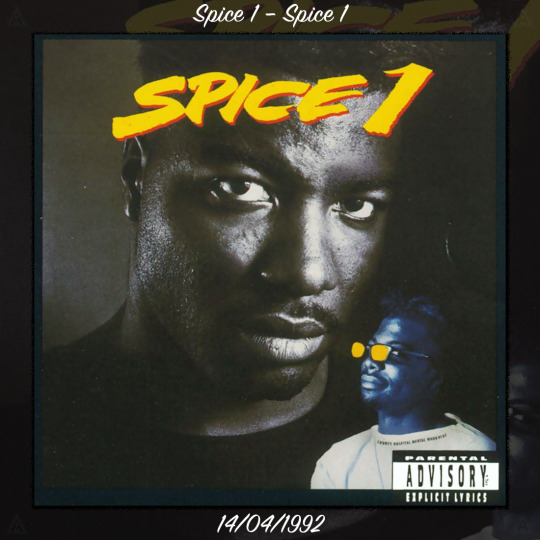
Spice 1 - Spice 1 (04/14/1992)
Spice 1 es el álbum debut homónimo del rapero estadounidense Spice 1, lanzado hoy 14 de abril de 1992 por Jive Records. Alcanzó el número 14 en los álbumes Billboard Top R&B / Hip-Hop y el número 82 en los Billboard Top Heatseekers. Certificado oro por la RIAA. El álbum fue producido por Ant Banks, Blackjack, EA-Ski & CMT y Spice 1. El sencillo, "Welcome to the Ghetto", alcanzó el número 39 en las canciones de Billboard Hot R&B / Hip-Hop y en el número 5 en las canciones de Billboard Rap.
Junto con los singles, se produjeron videos musicales para cuatro canciones: "In My Neighborhood", "Welcome to the Ghetto", "187 Proof" y "East Bay Gangsta". Richie Rich hace un cameo en "Welcome to the ghetto". "East Bay Gangsta" y "Welcome to the Ghetto" fueron lados B en los otros singles. El álbum se incluyó en los 100 mejores álbumes de hip hop de la revista Source.
1990's Rap / Hip Hop Vol. 1
#1990sHipHop#1992Rap#1992HipHop#HaywardRap#OaklandRap#DebutAlbum#GangstaRap#JiveRecords#RapEstadounidense#Spice1#CaliforniaRap#WestCoastRap#WestCoastHipHop#Spotify
1 note
·
View note